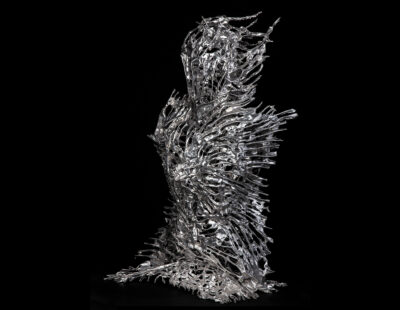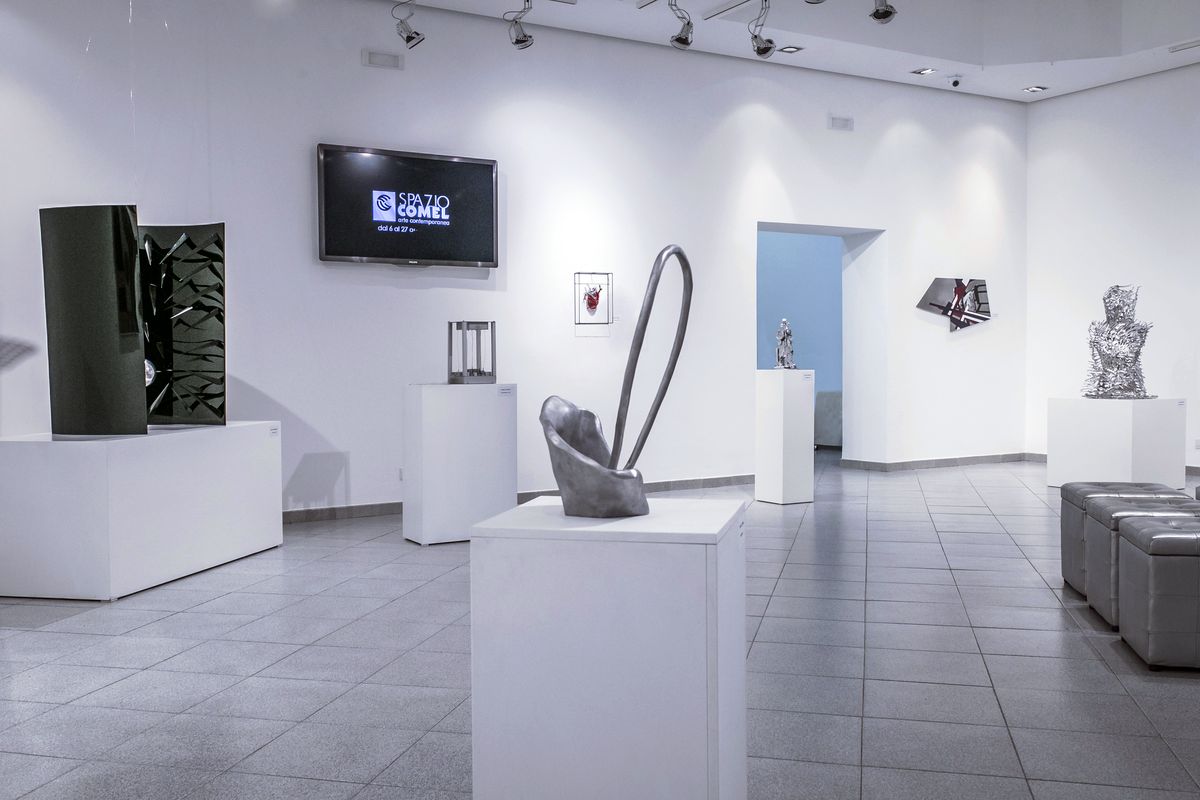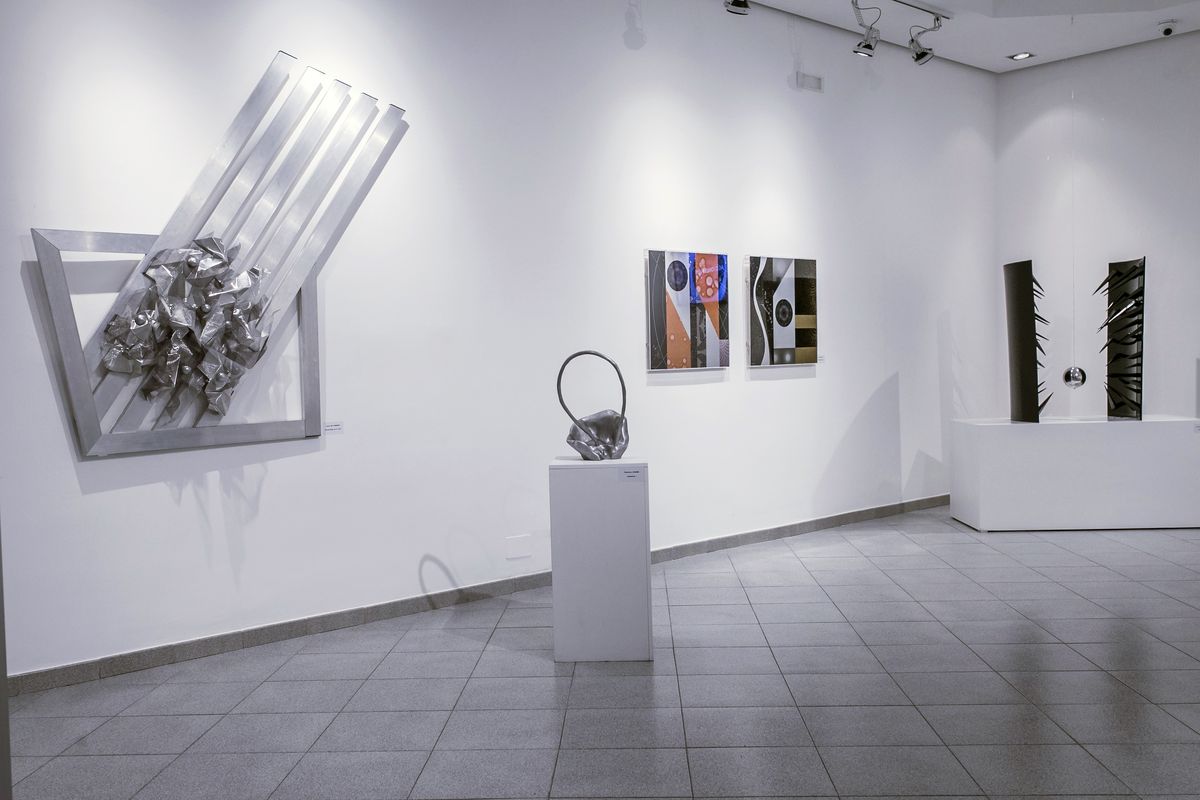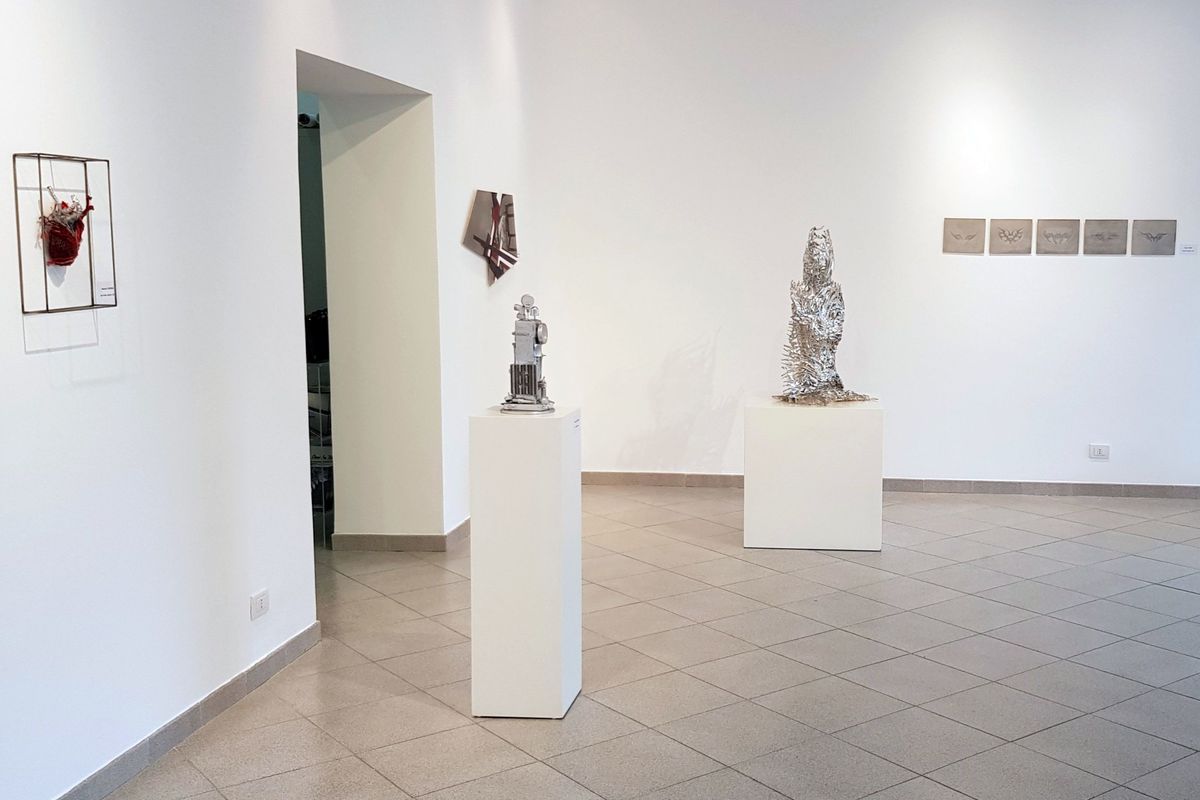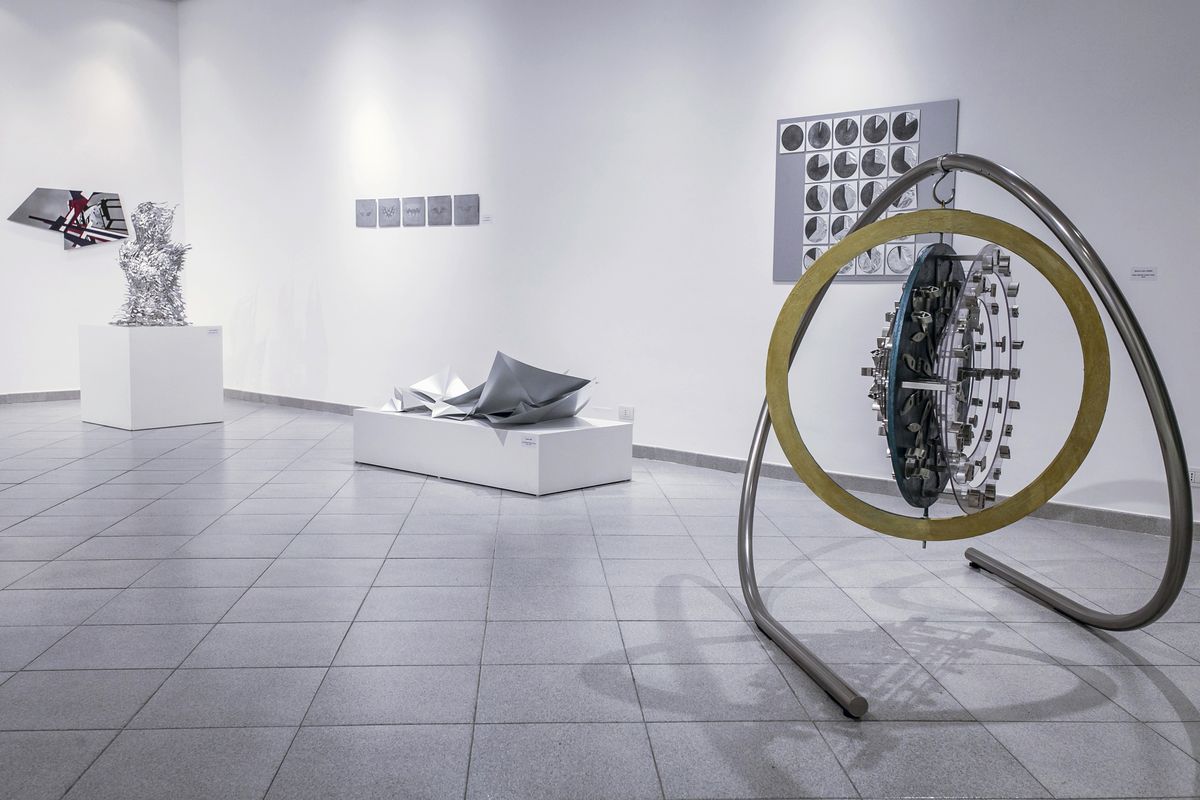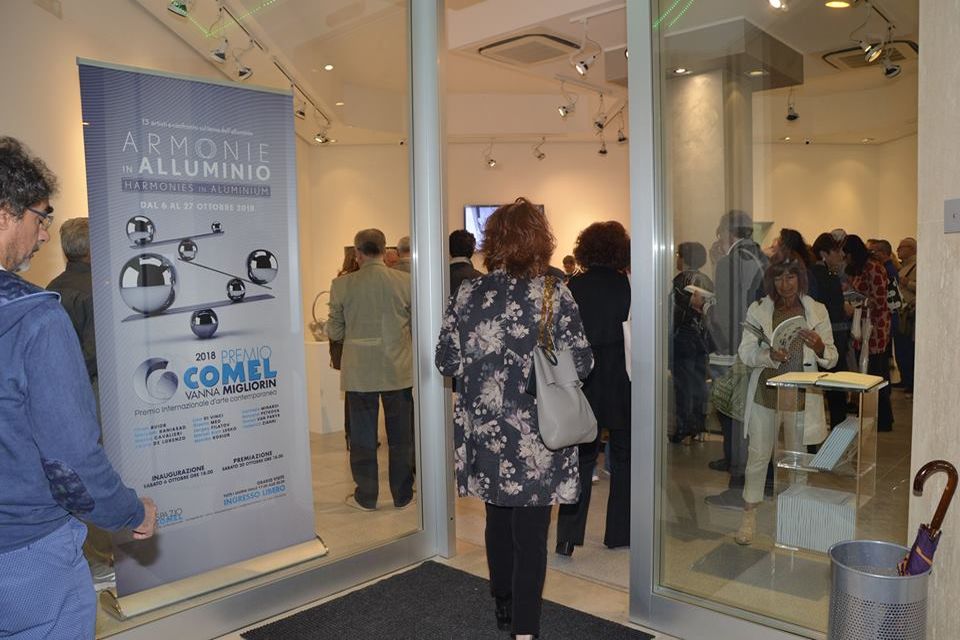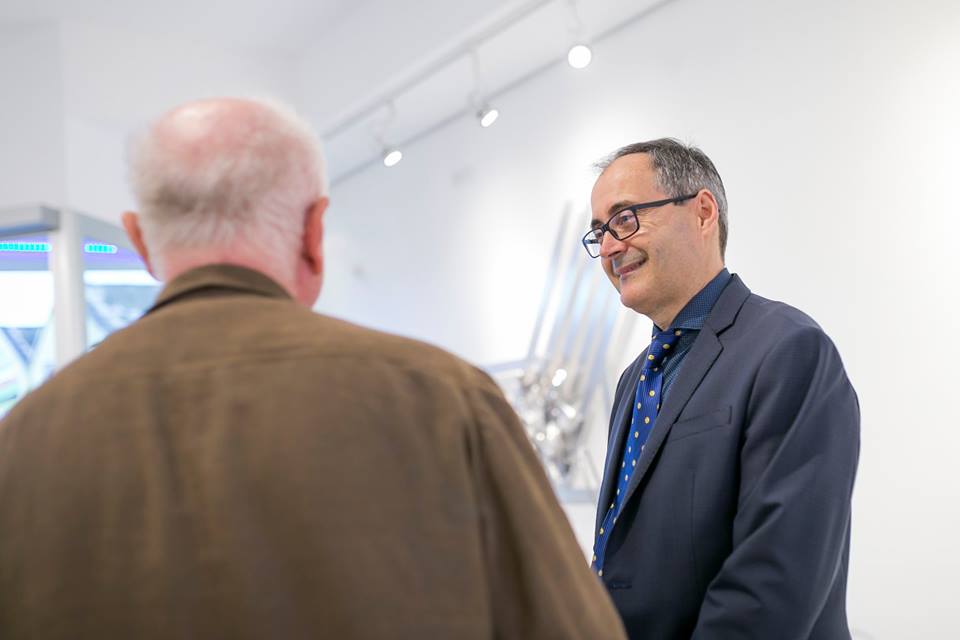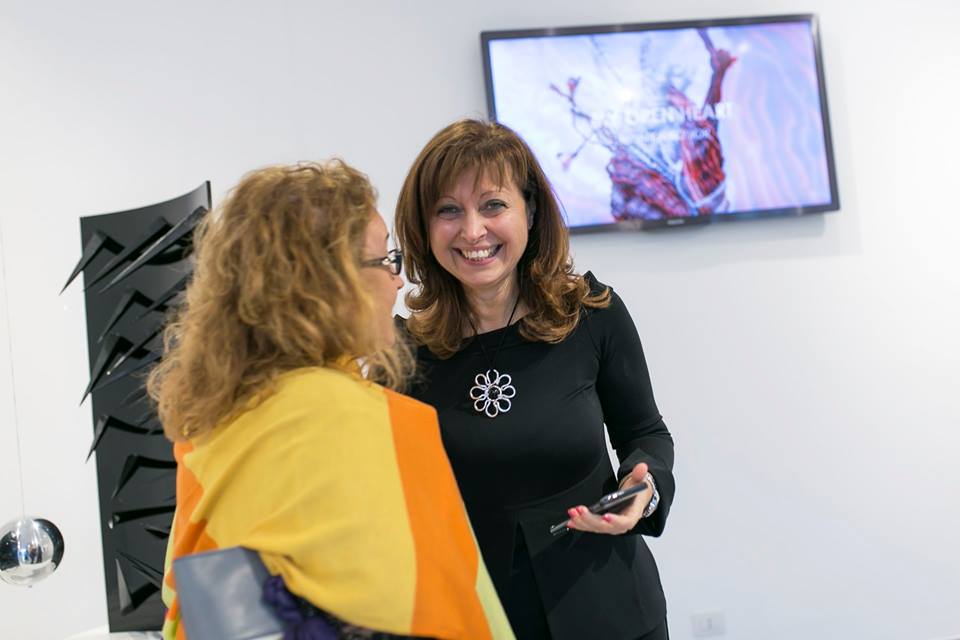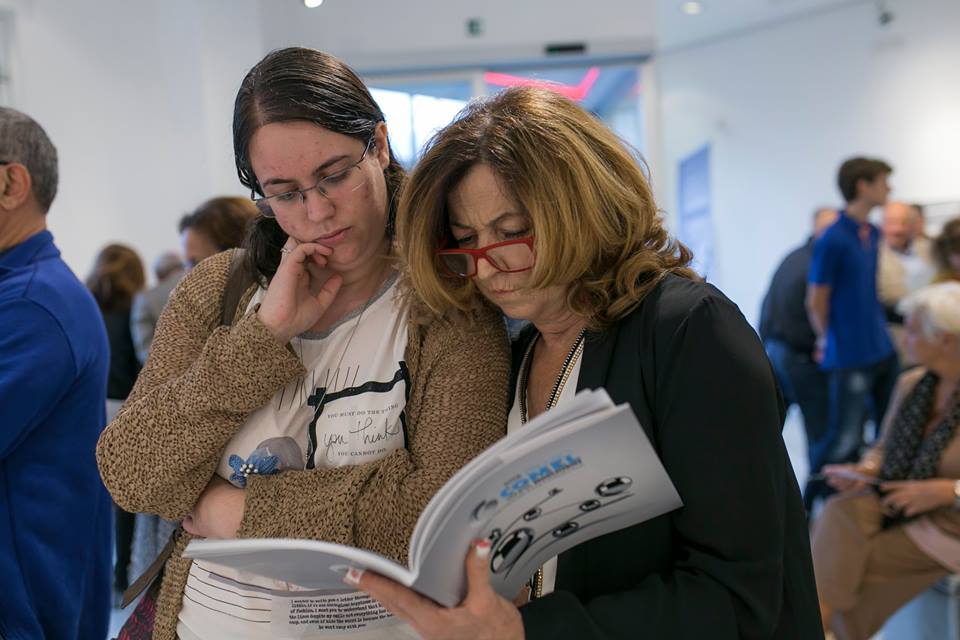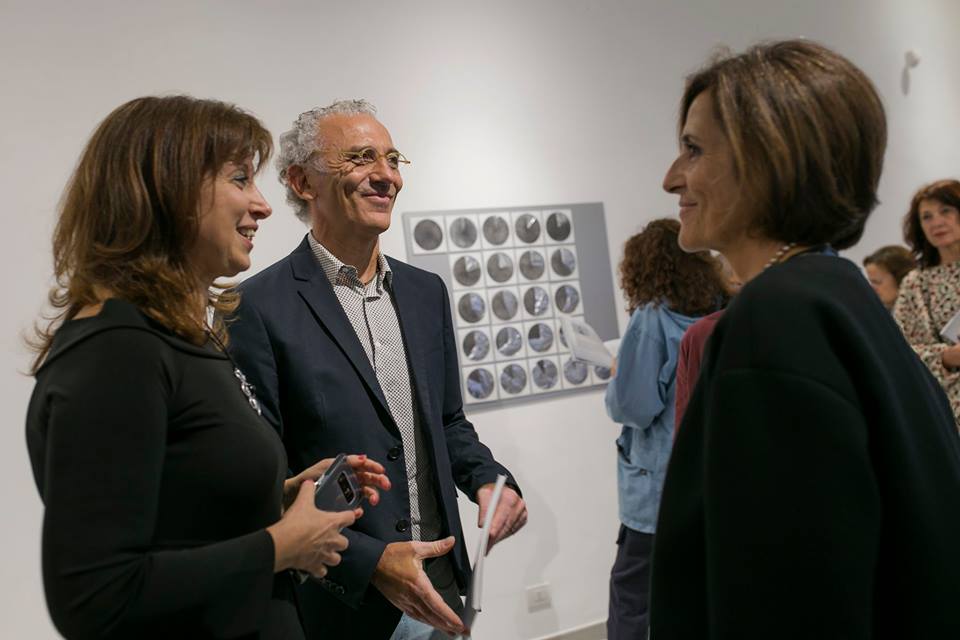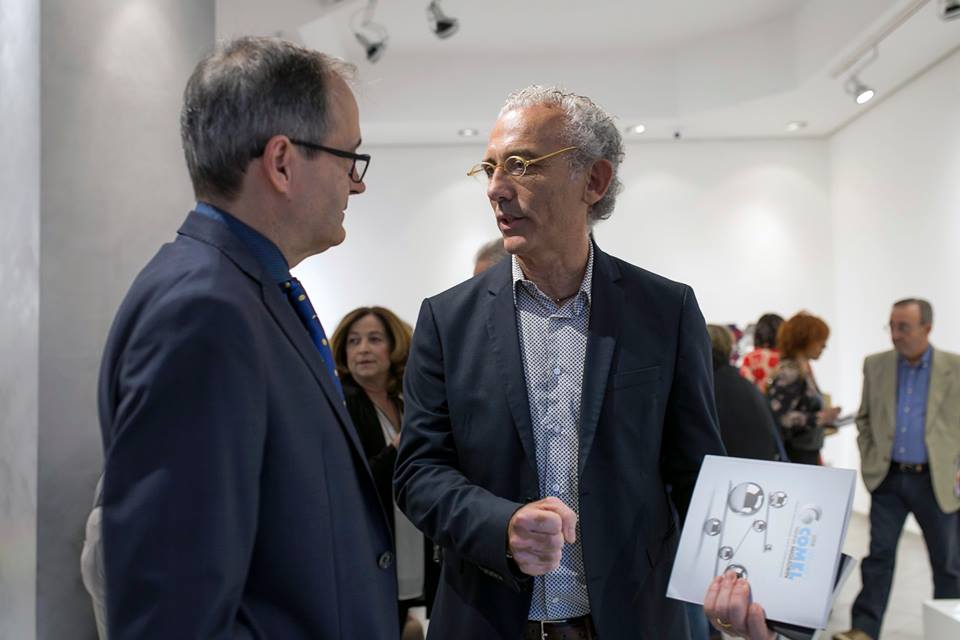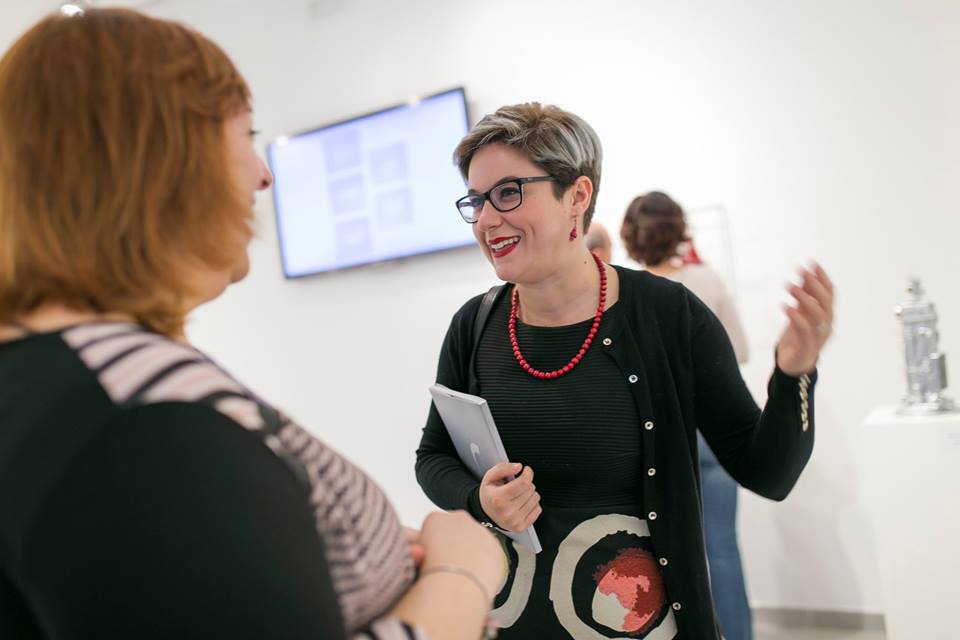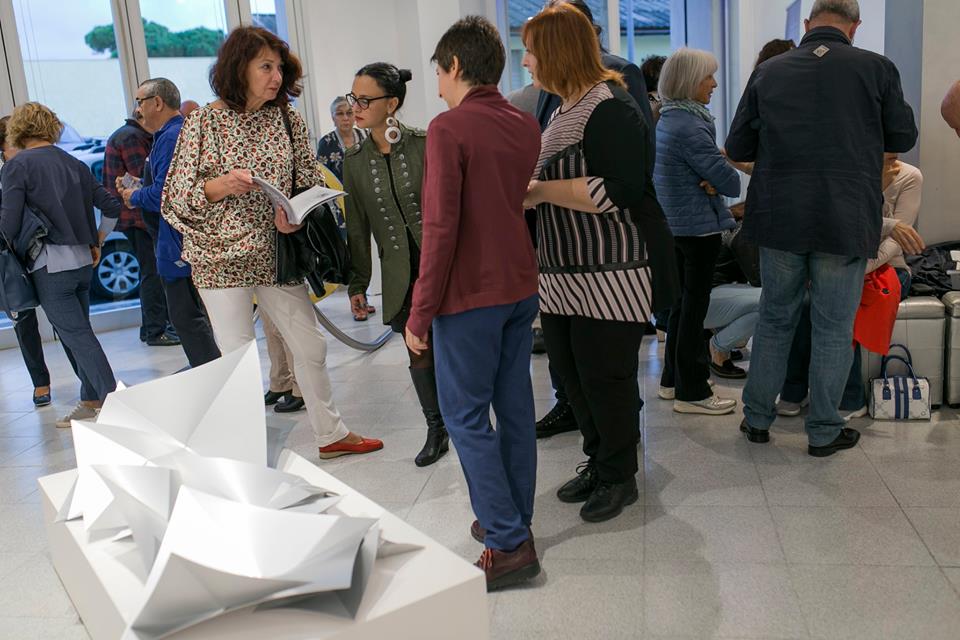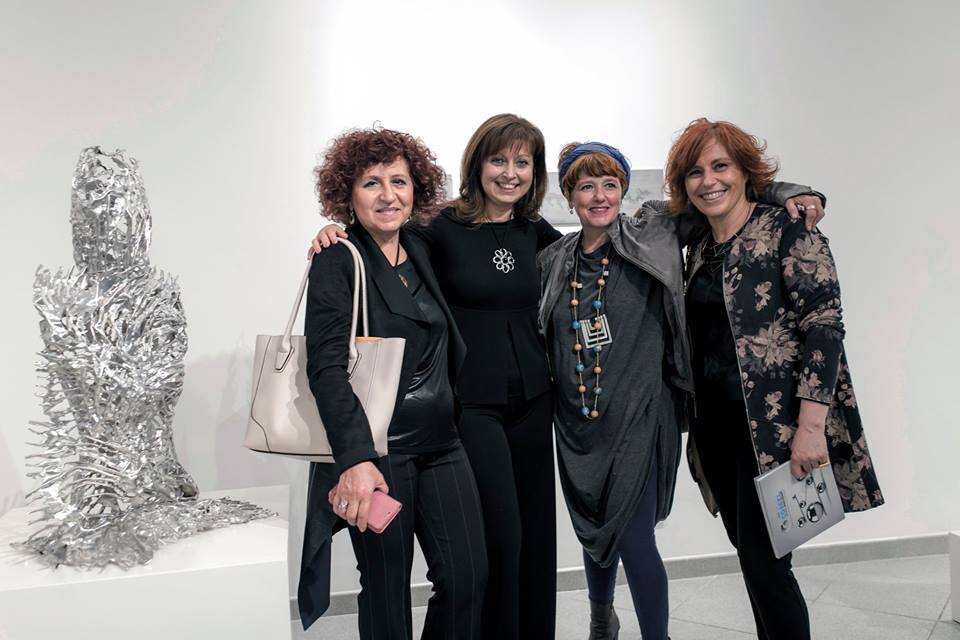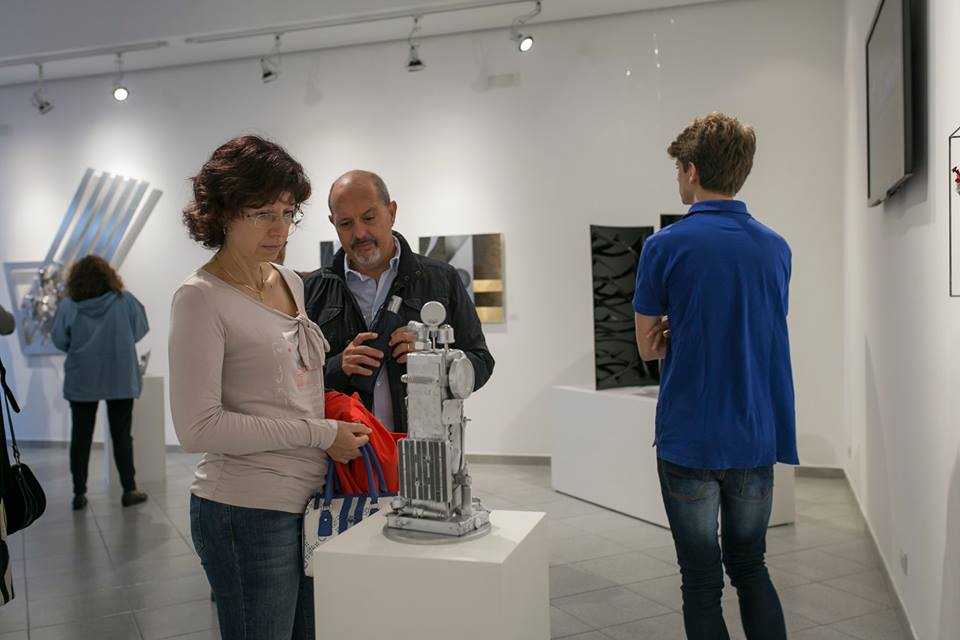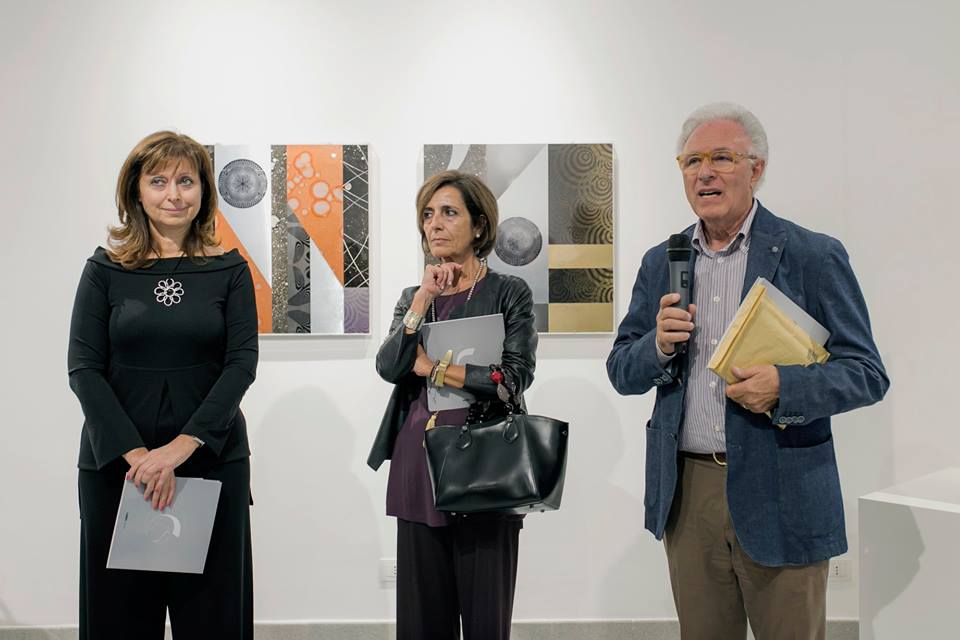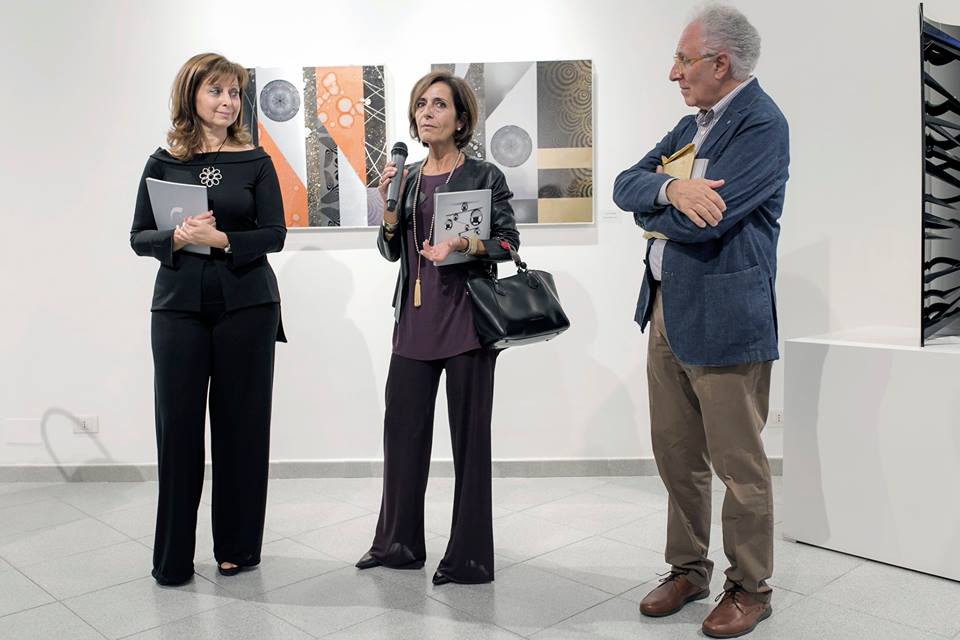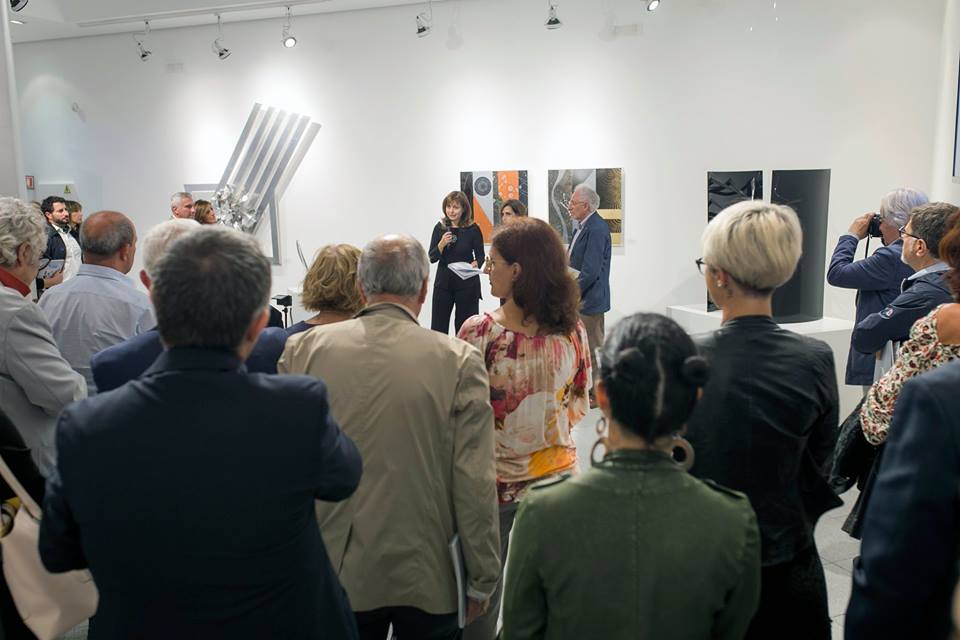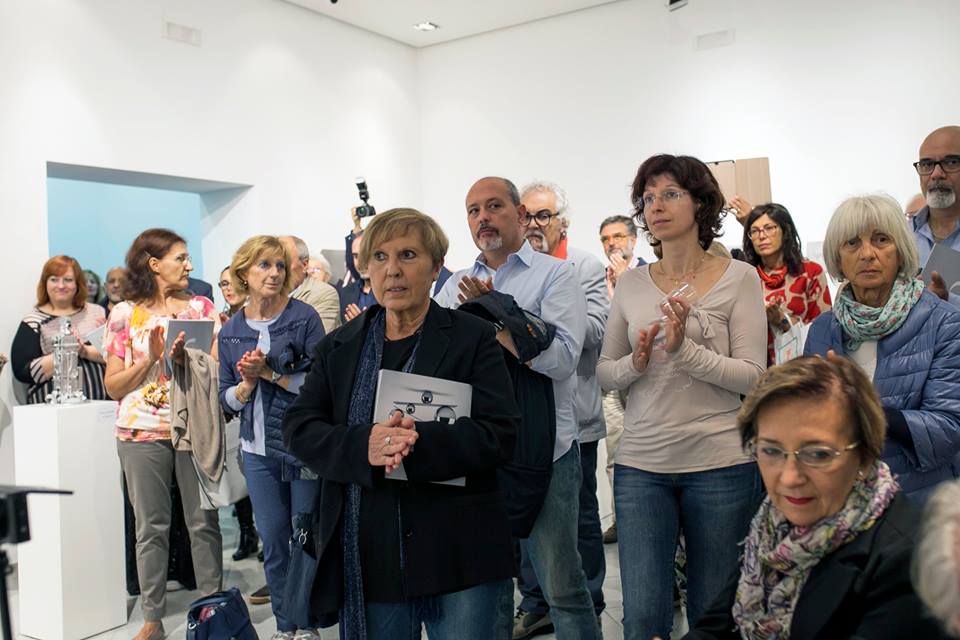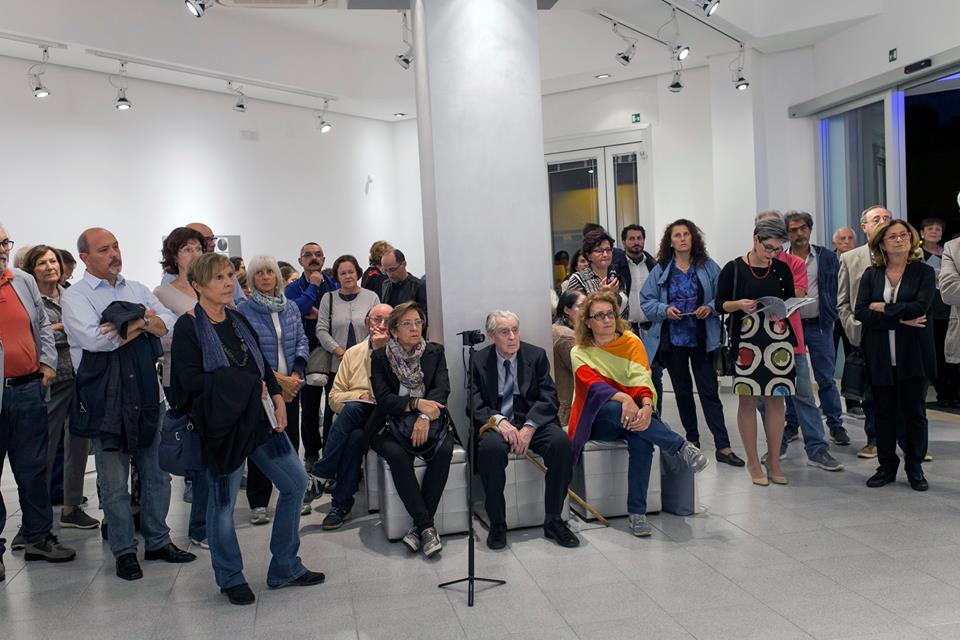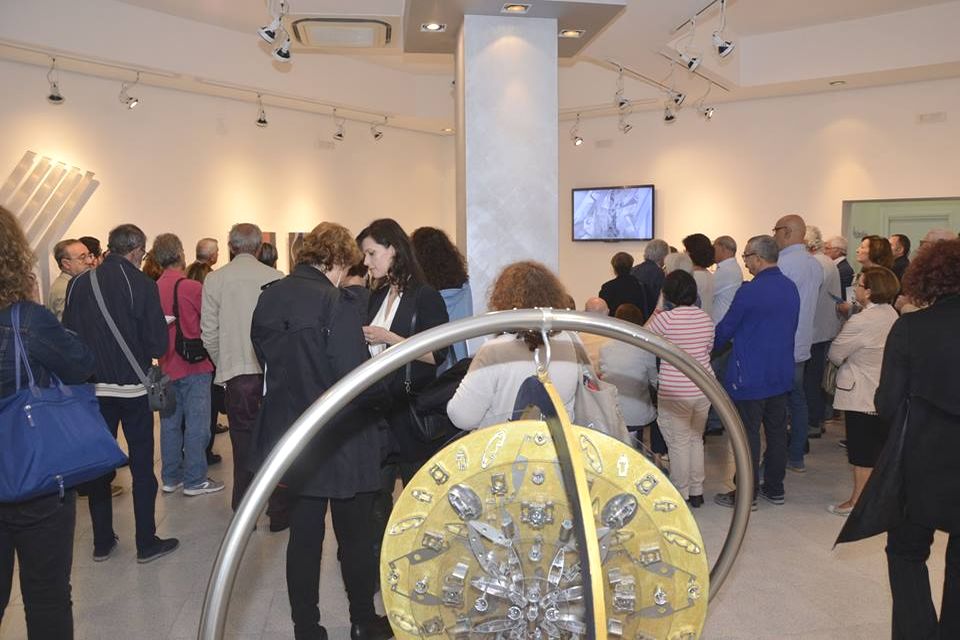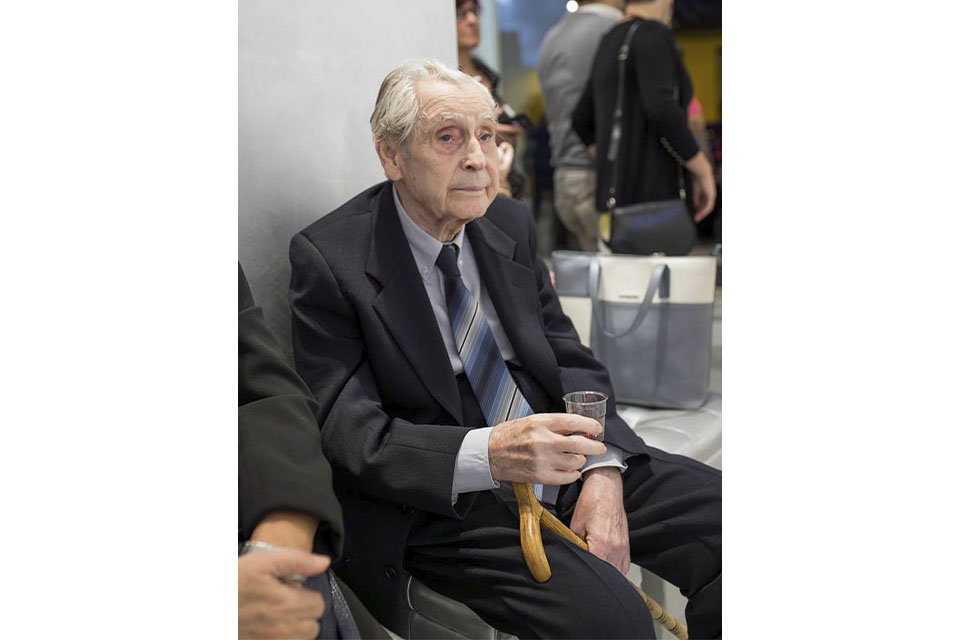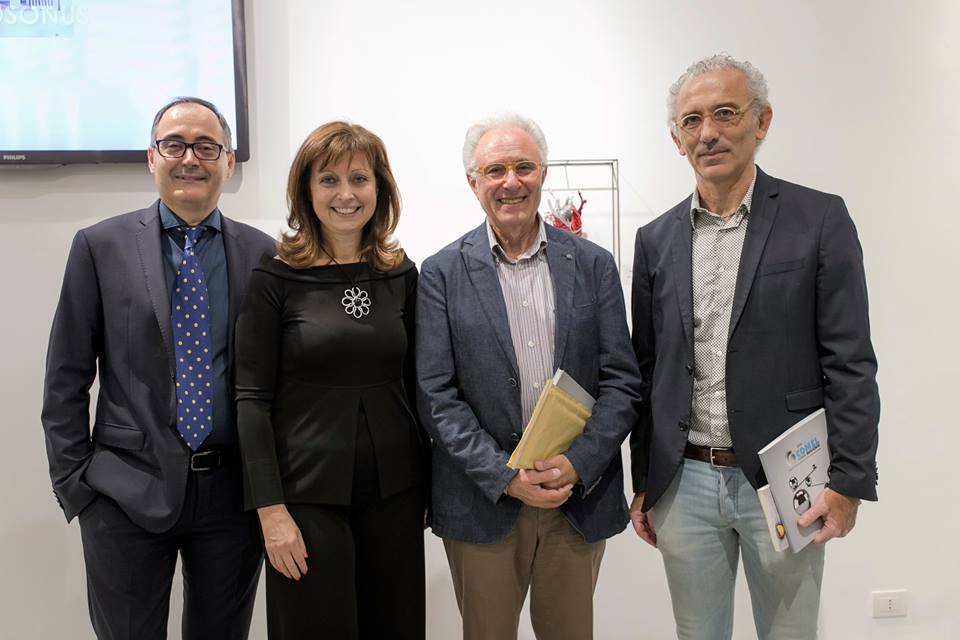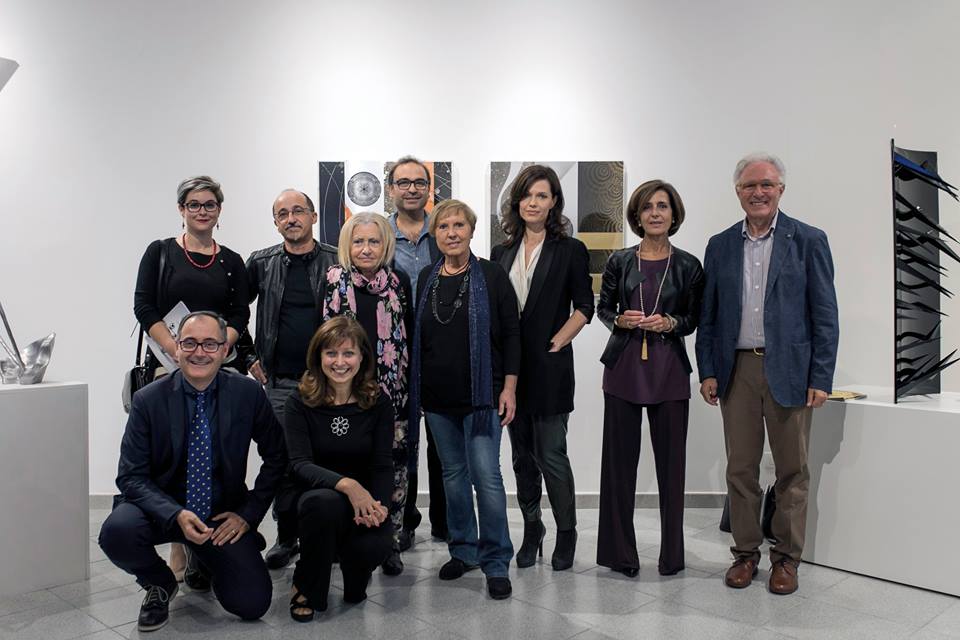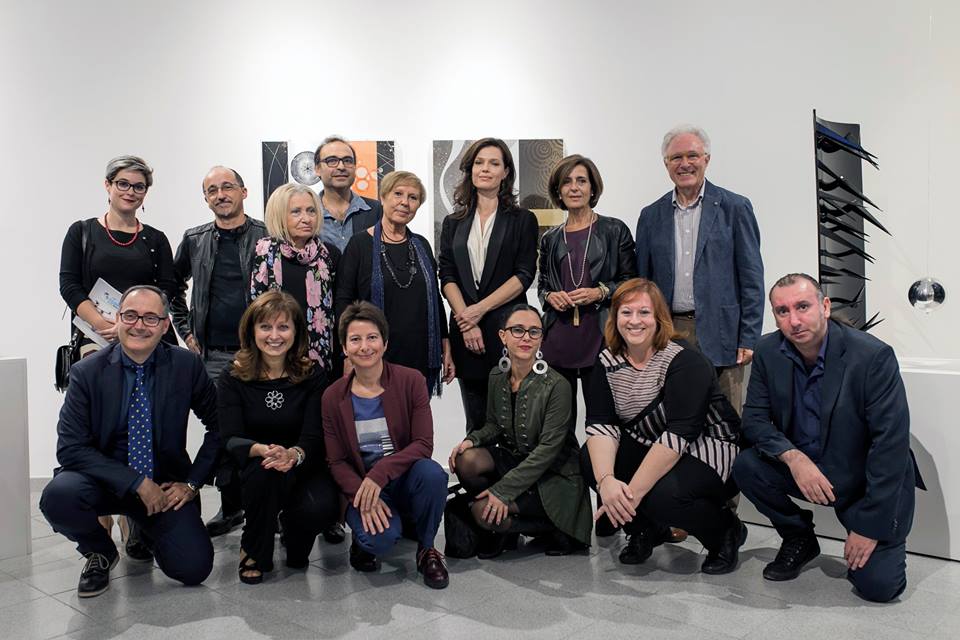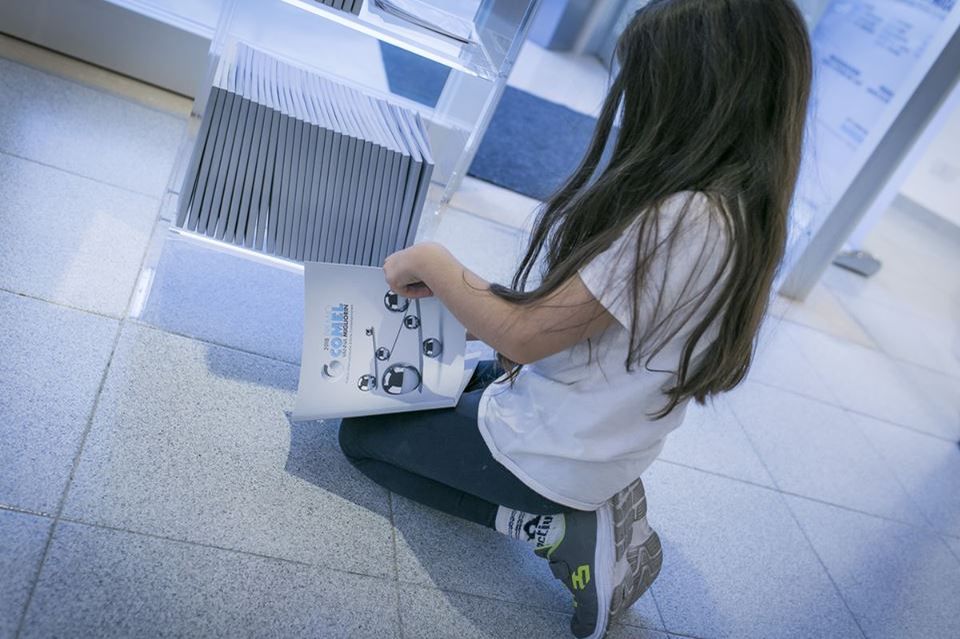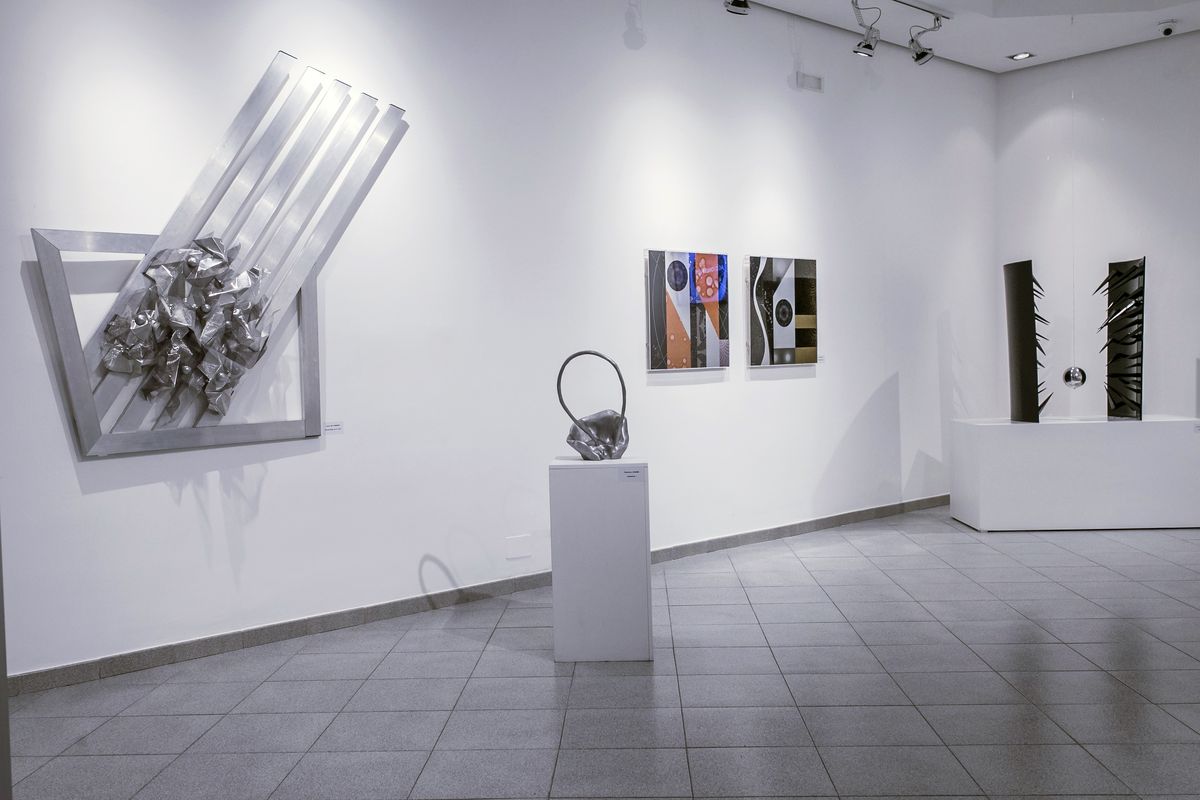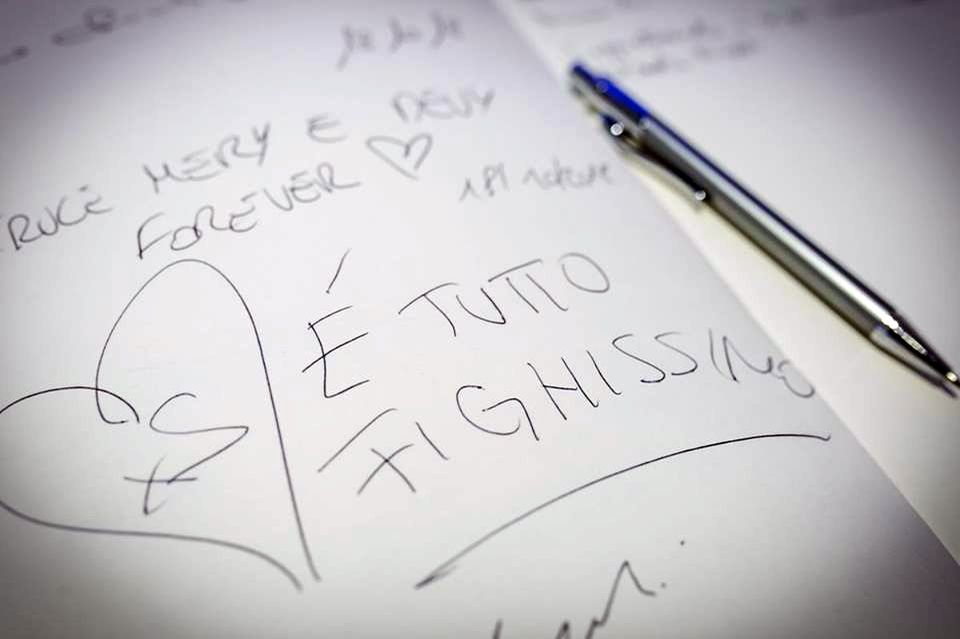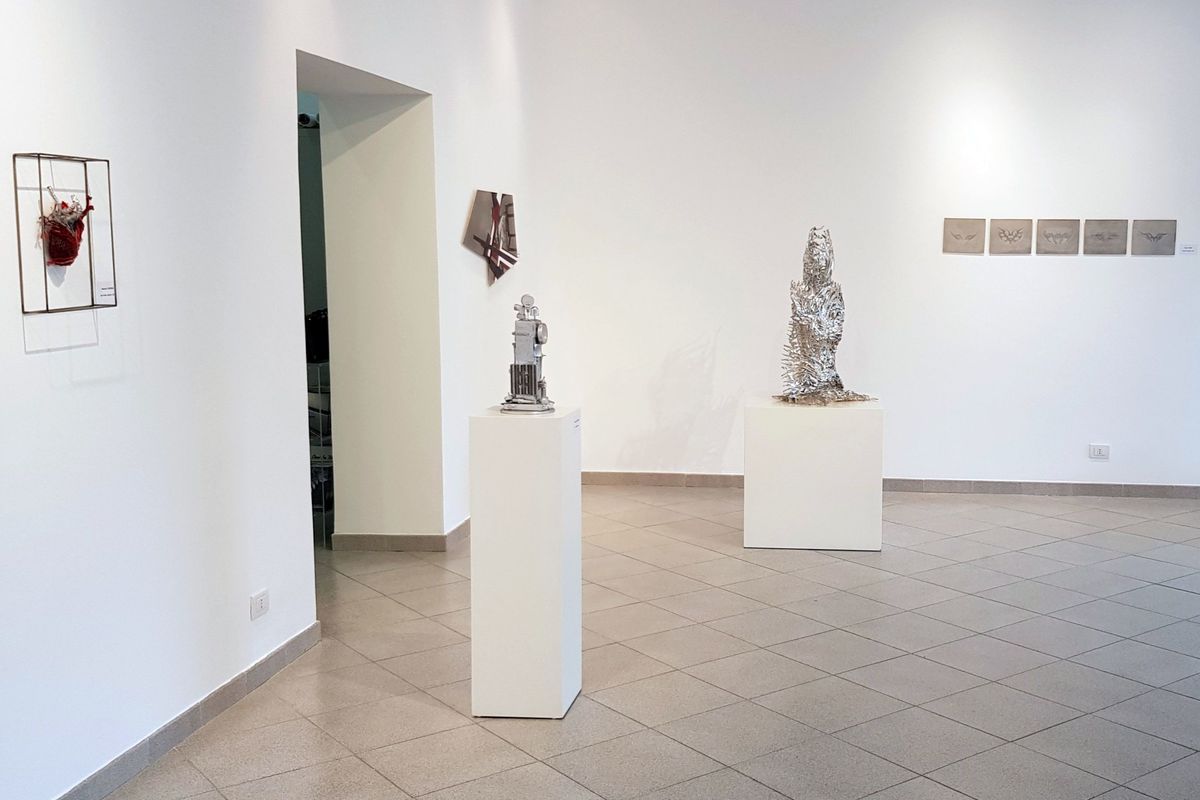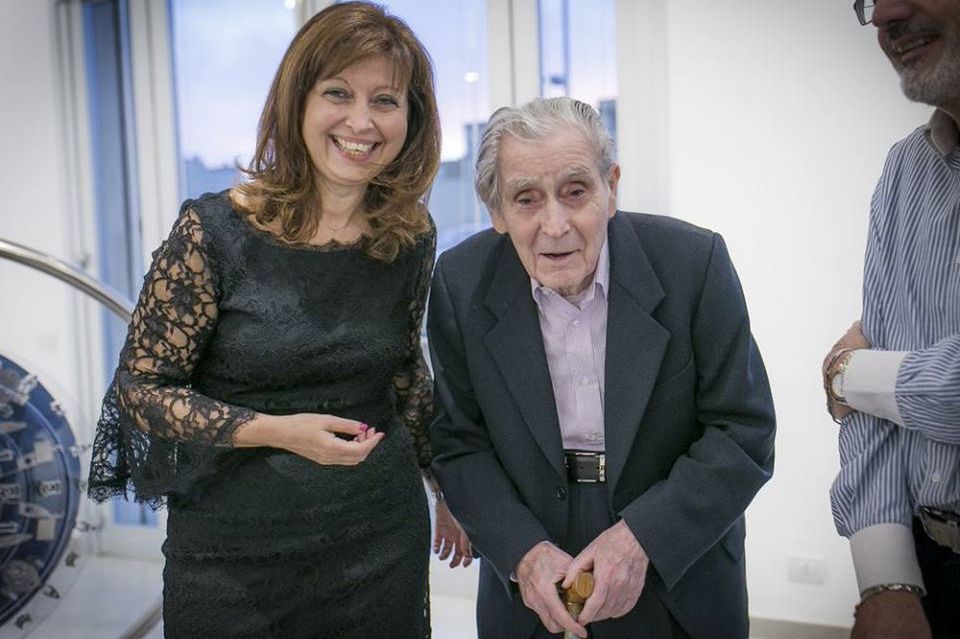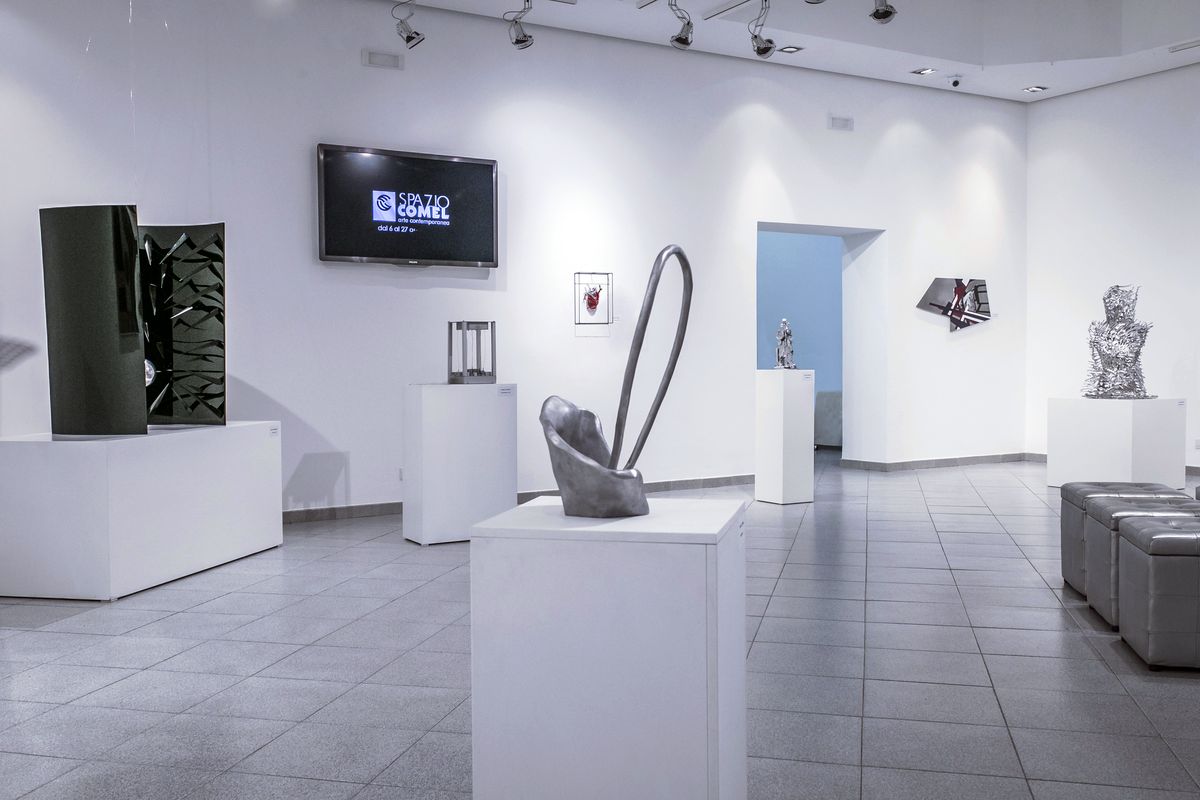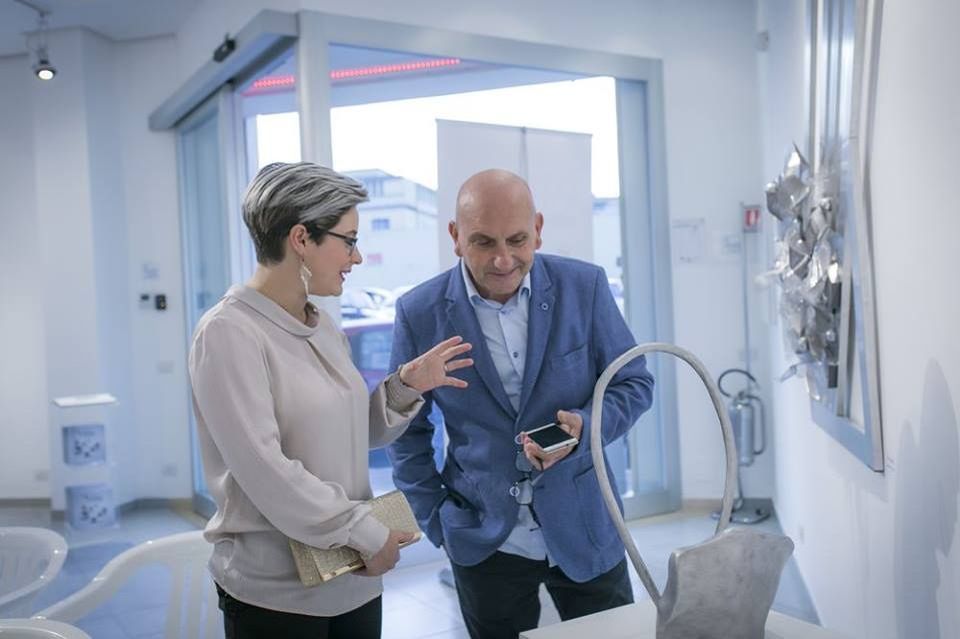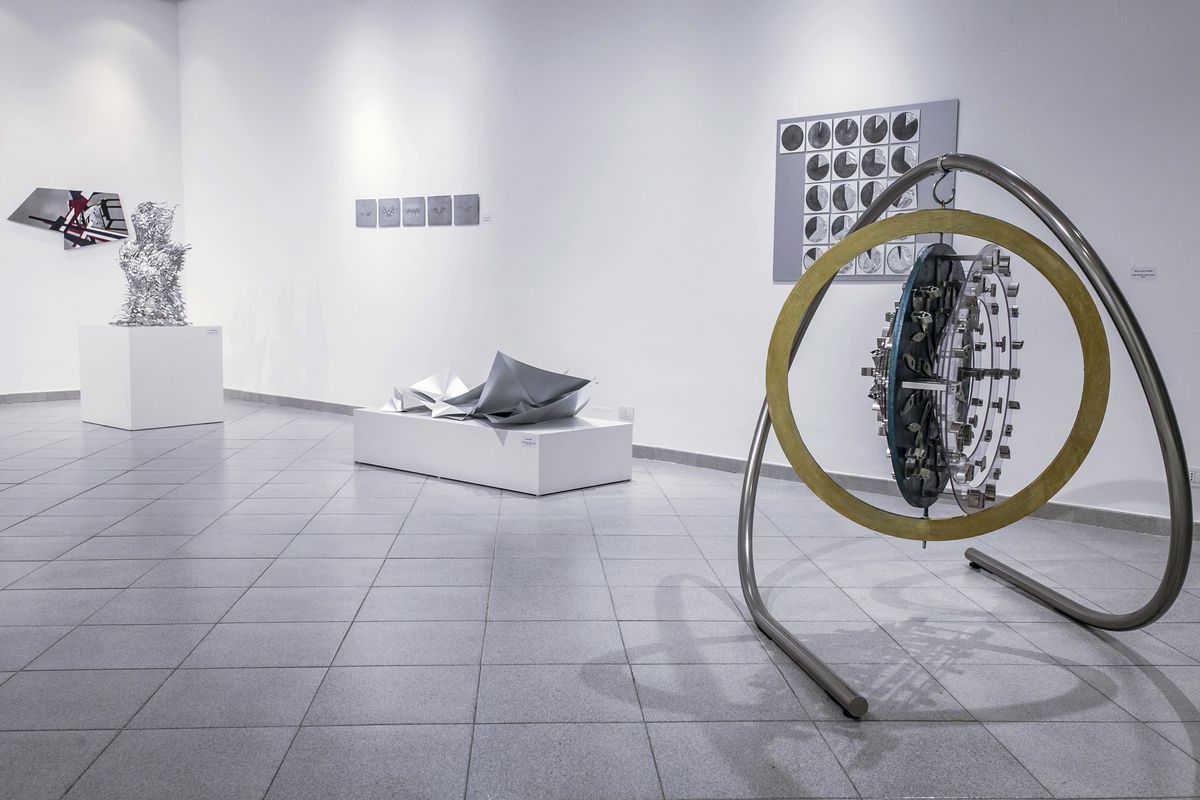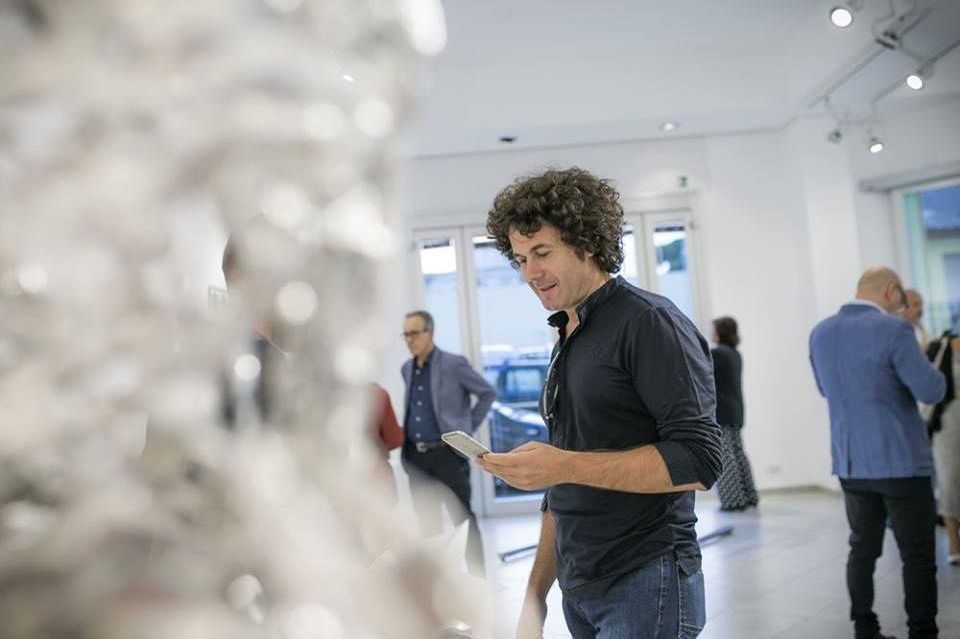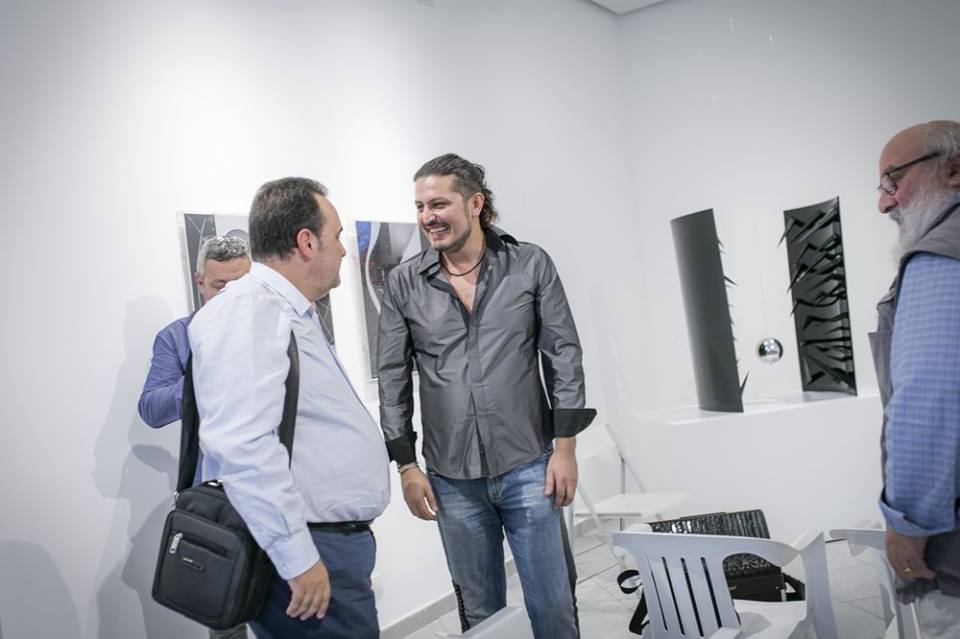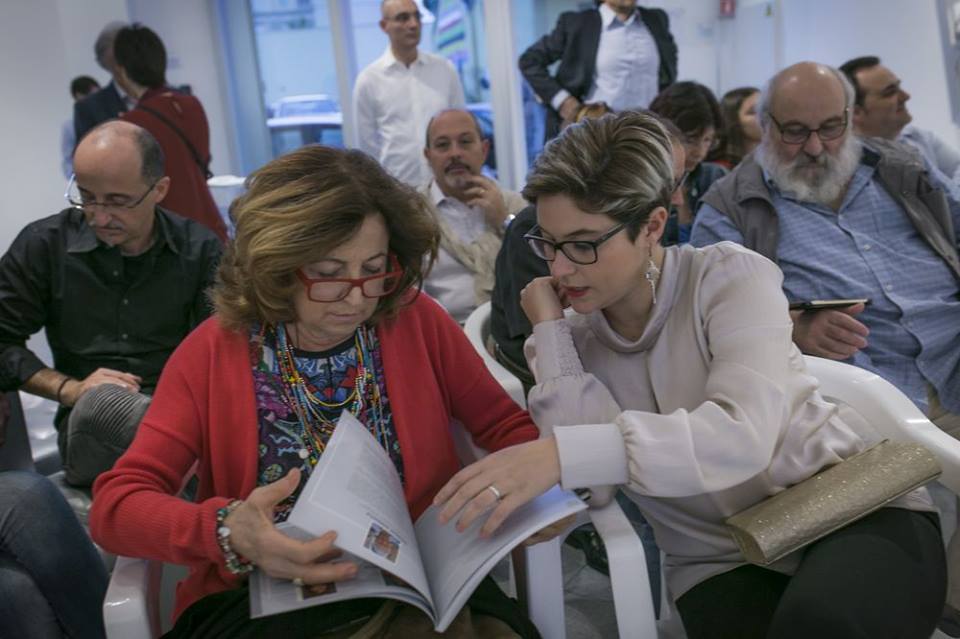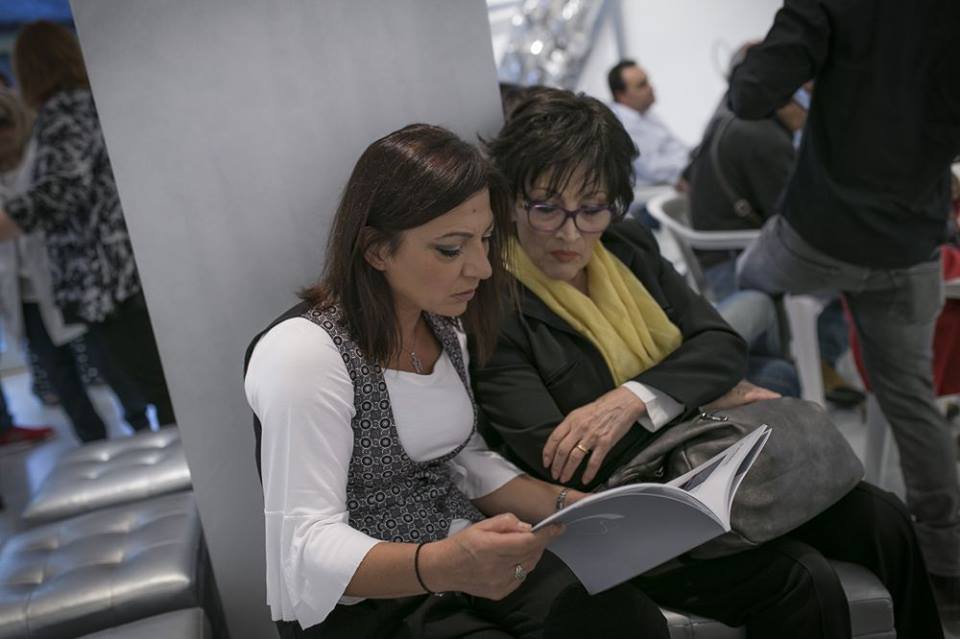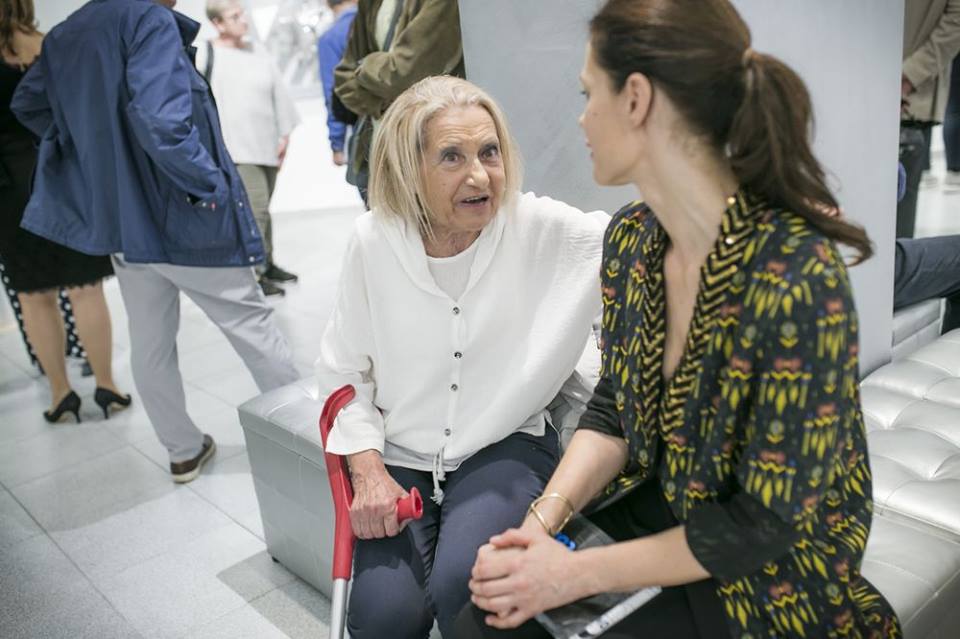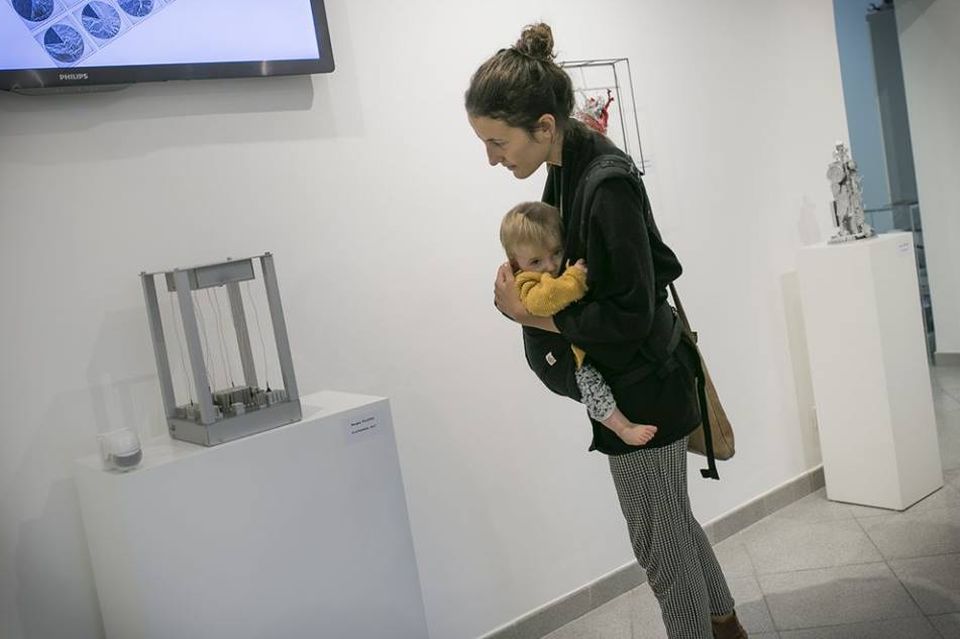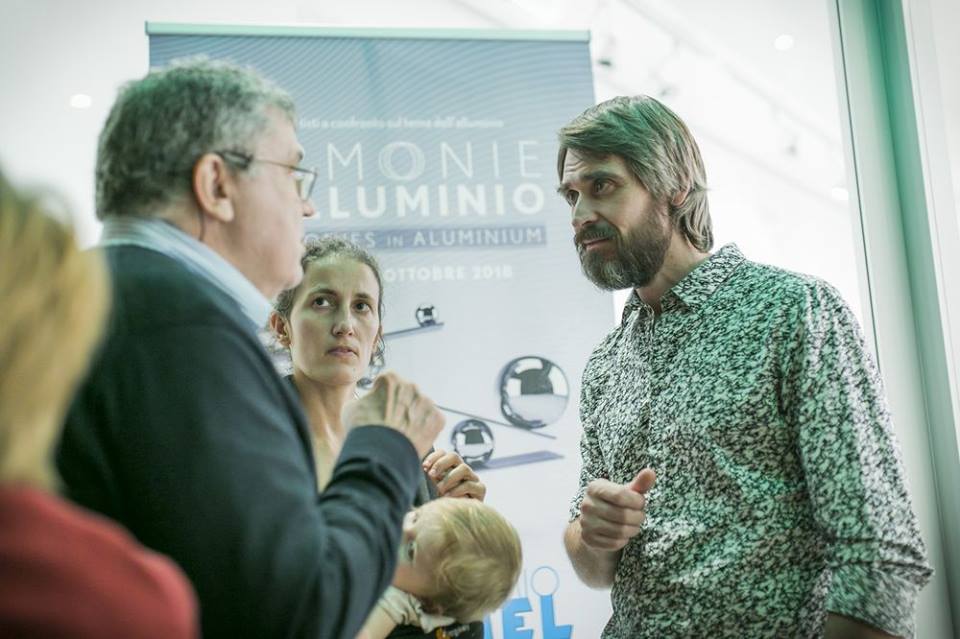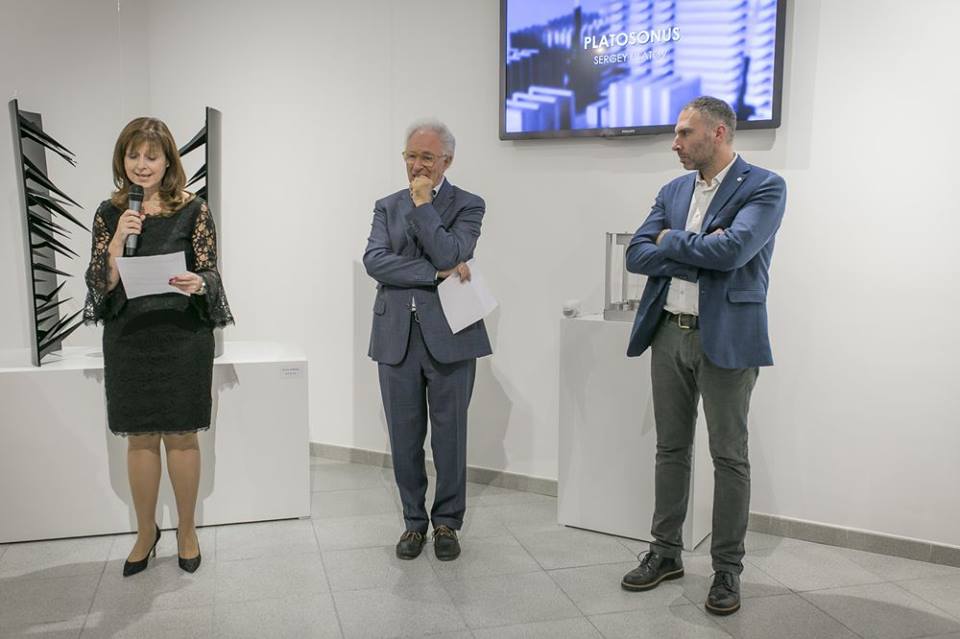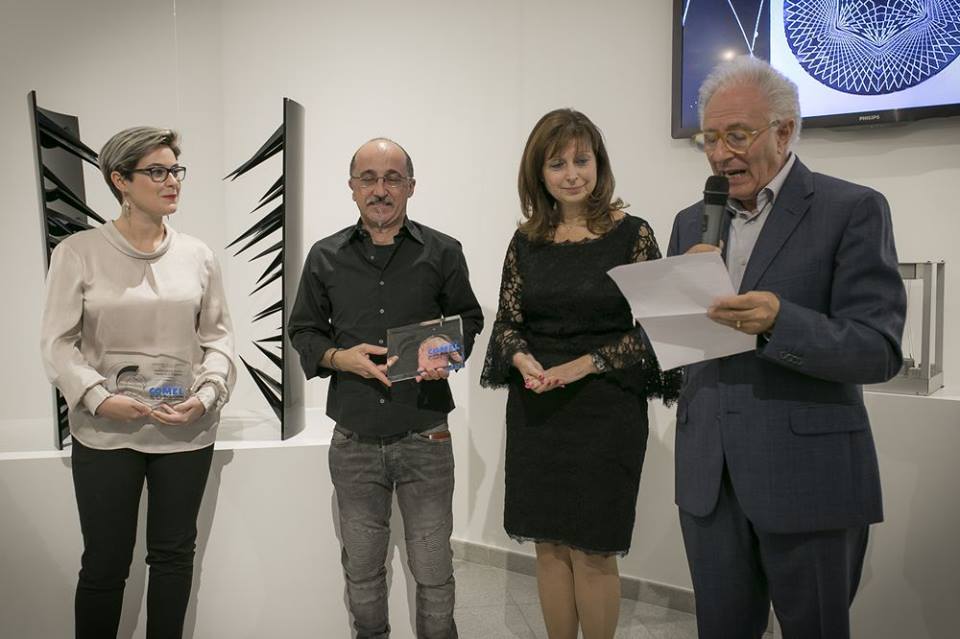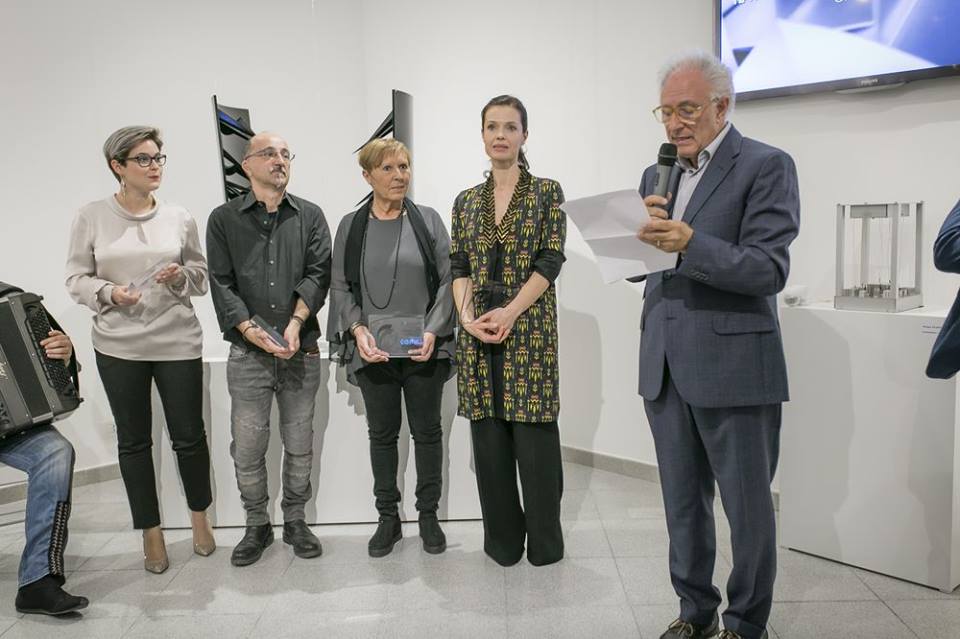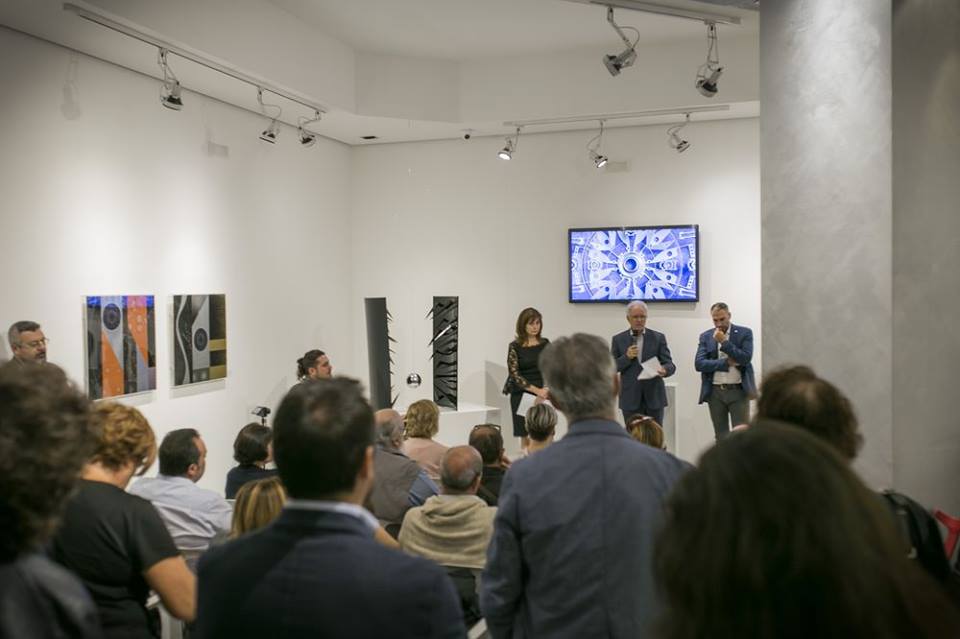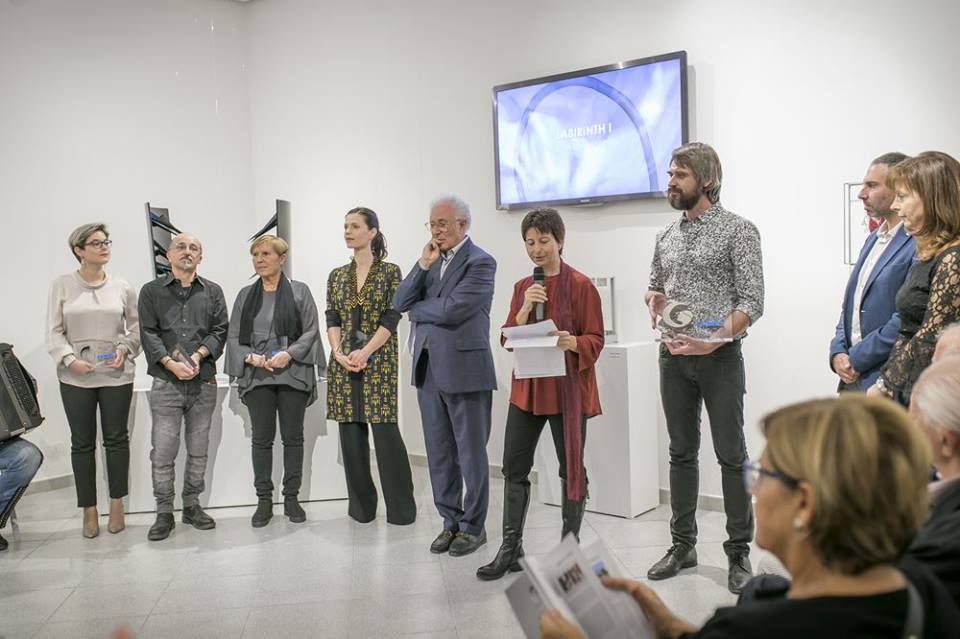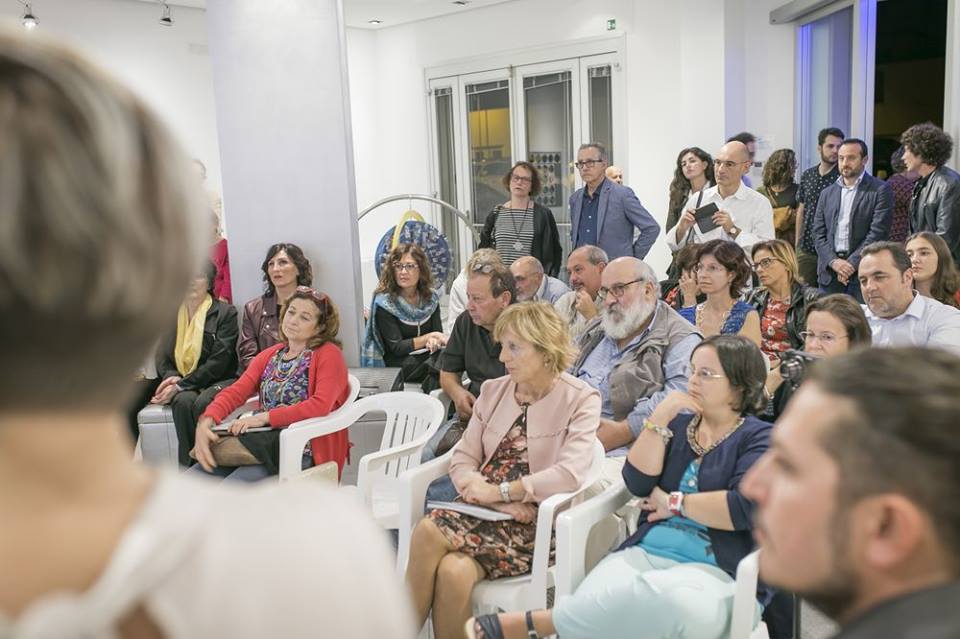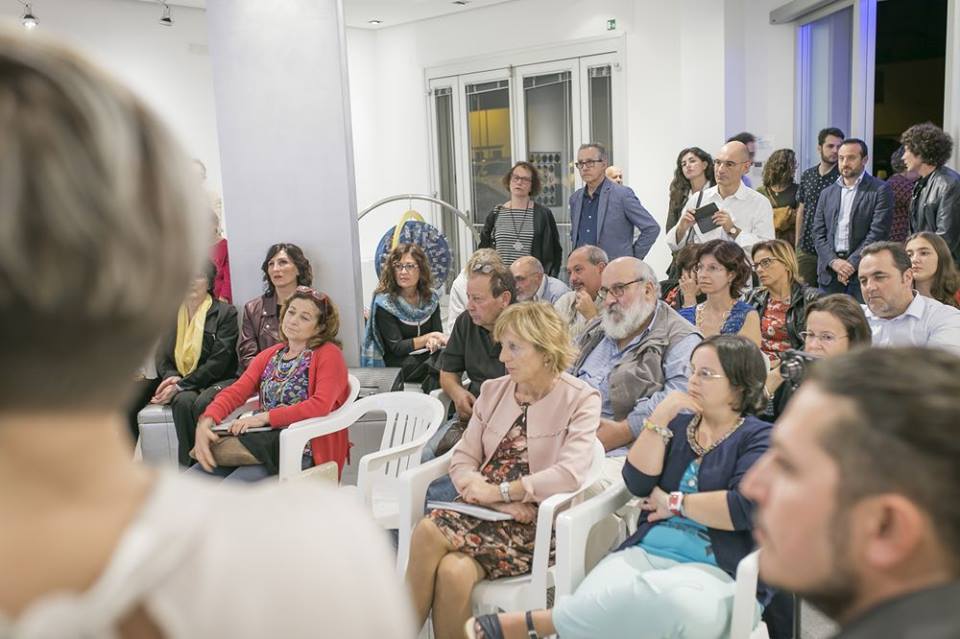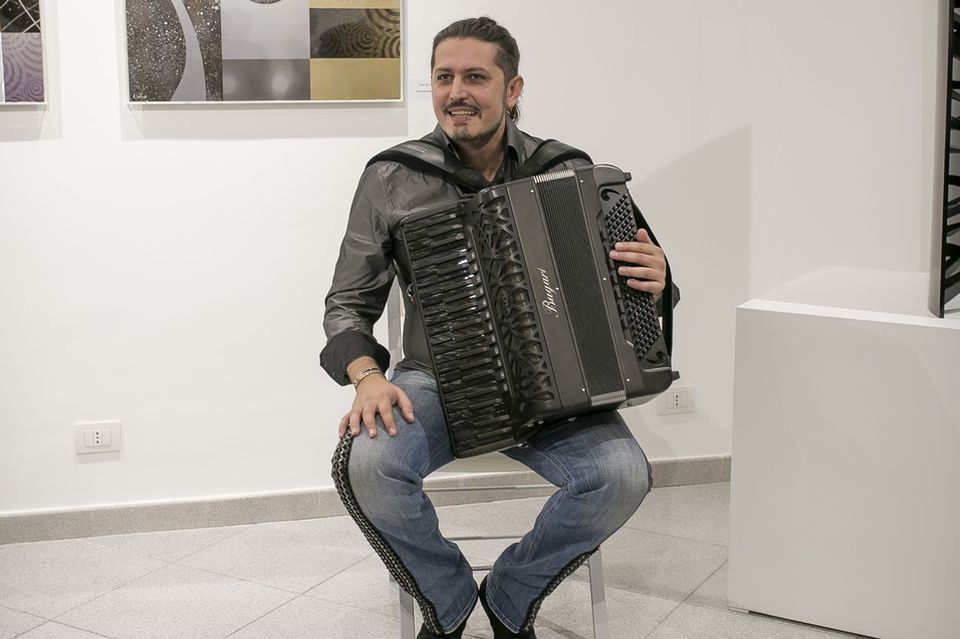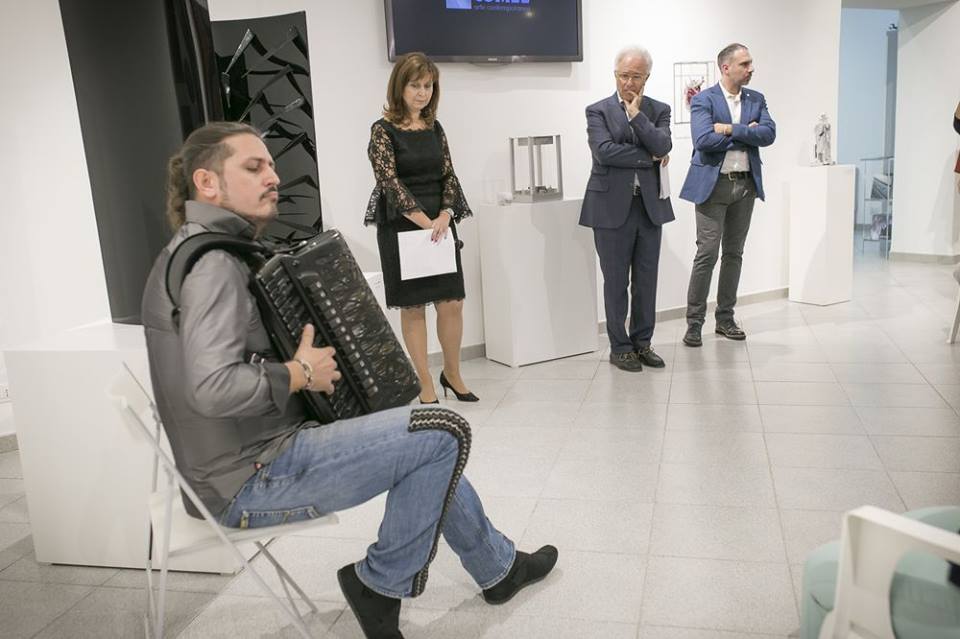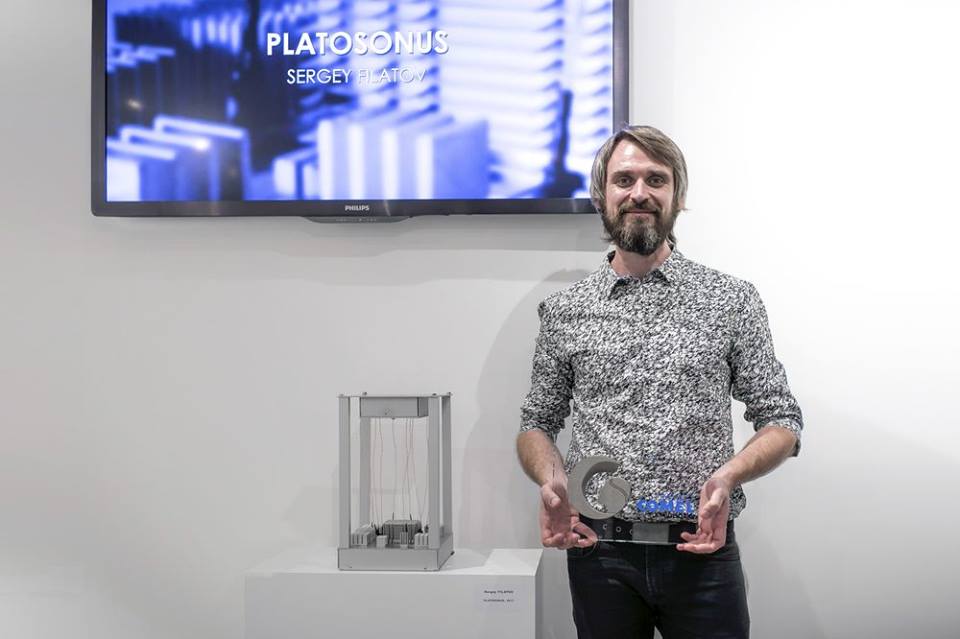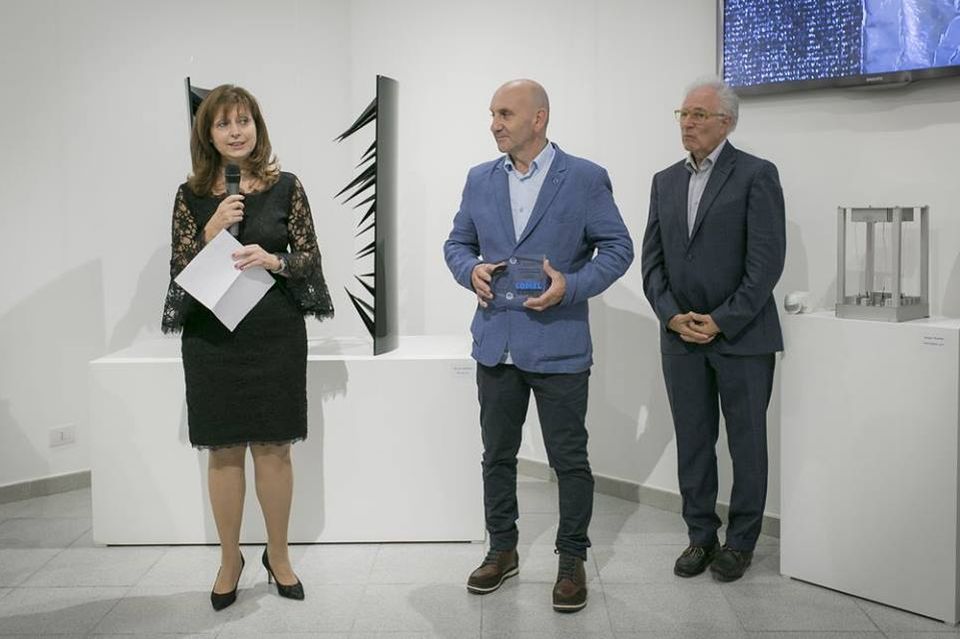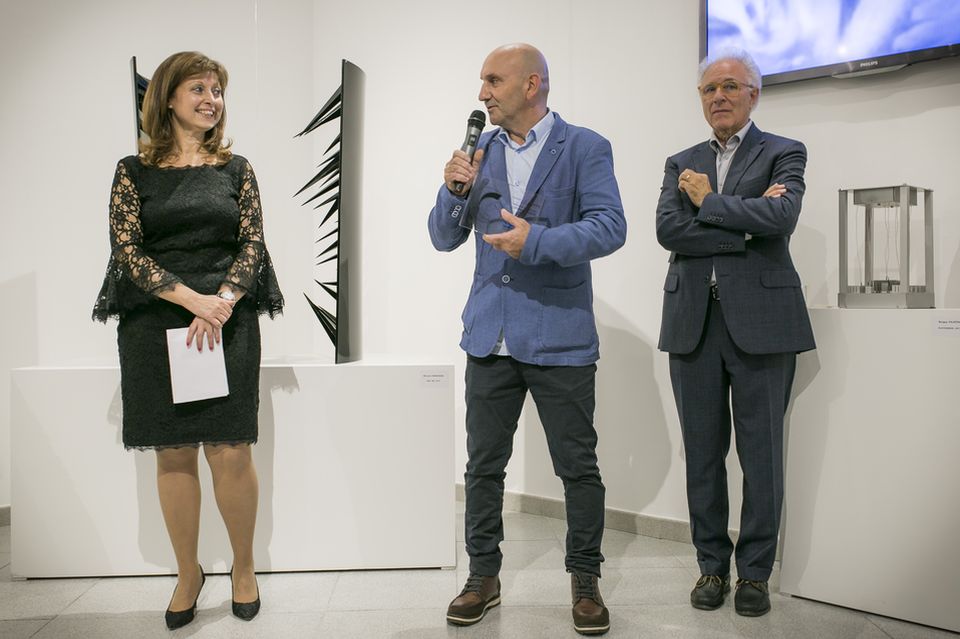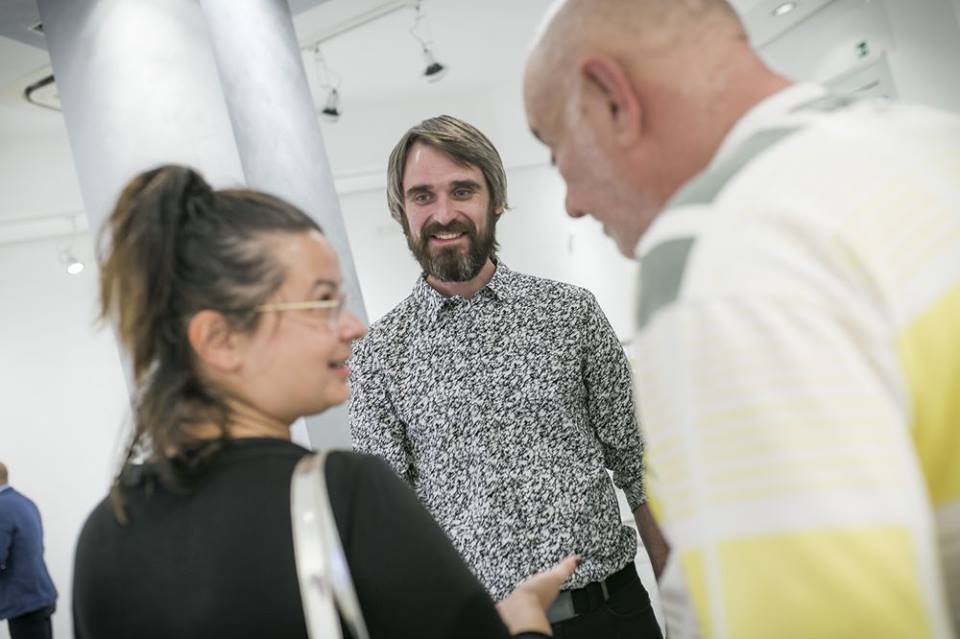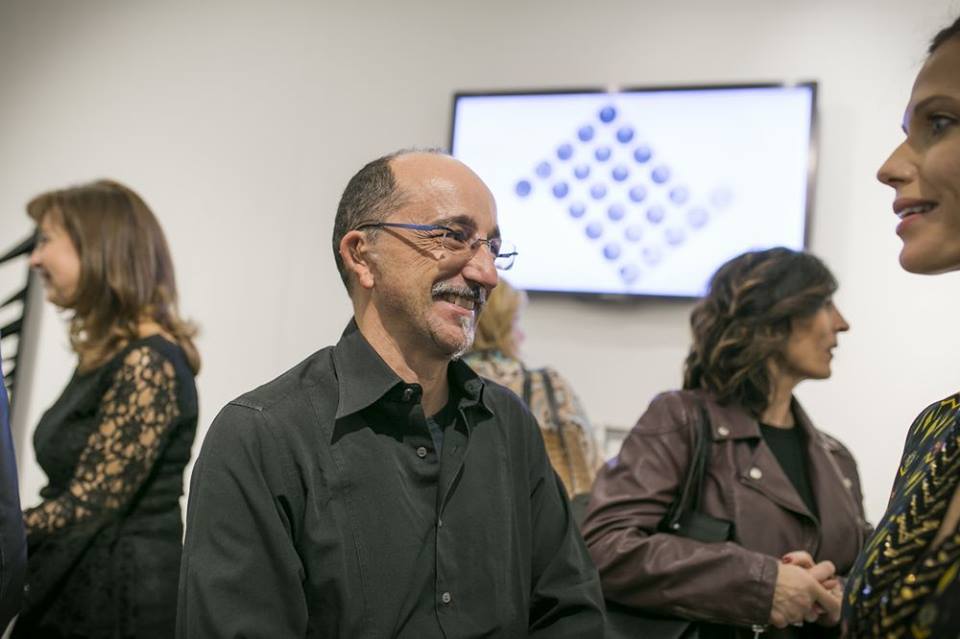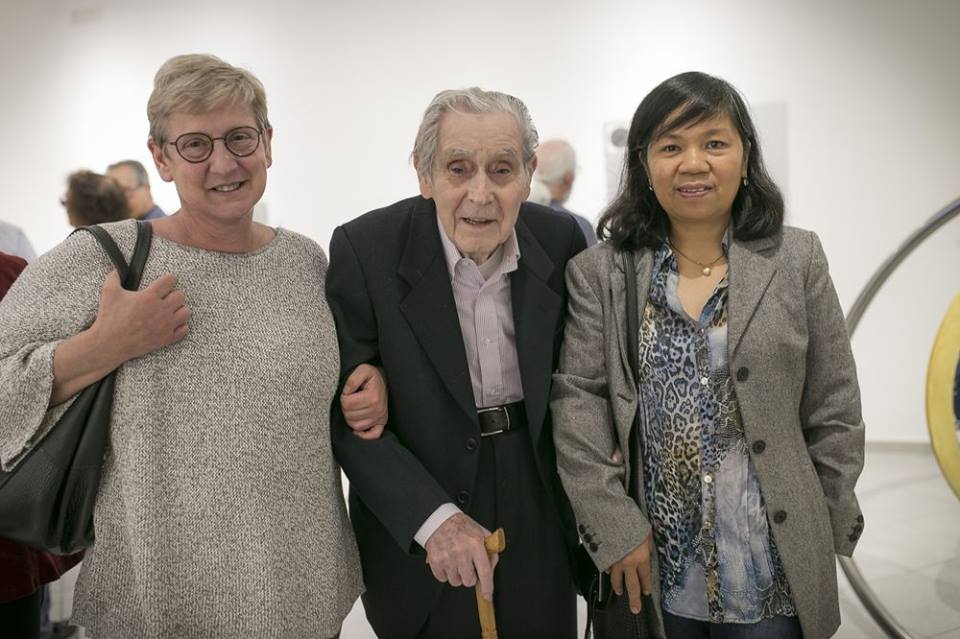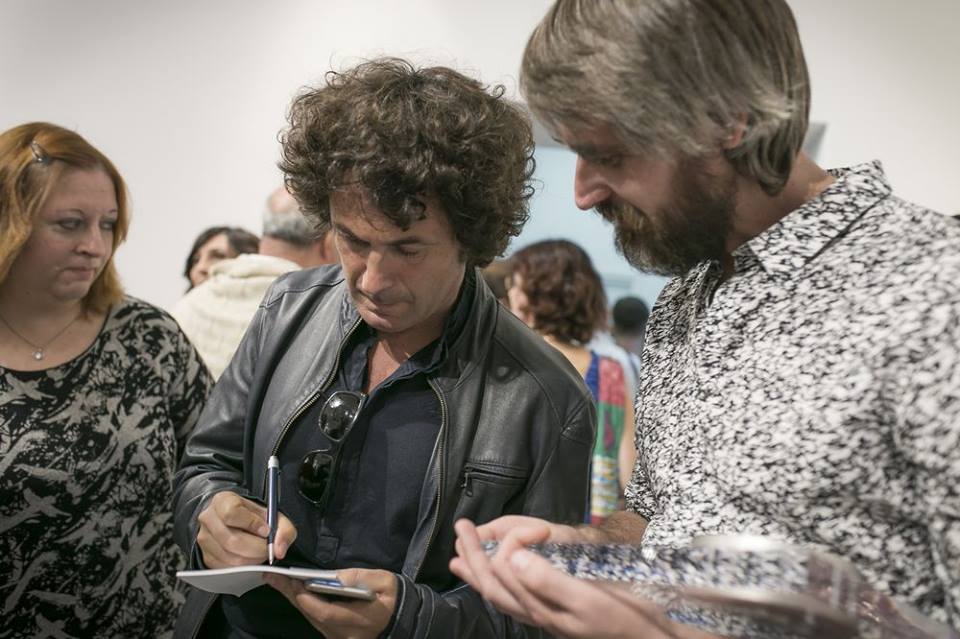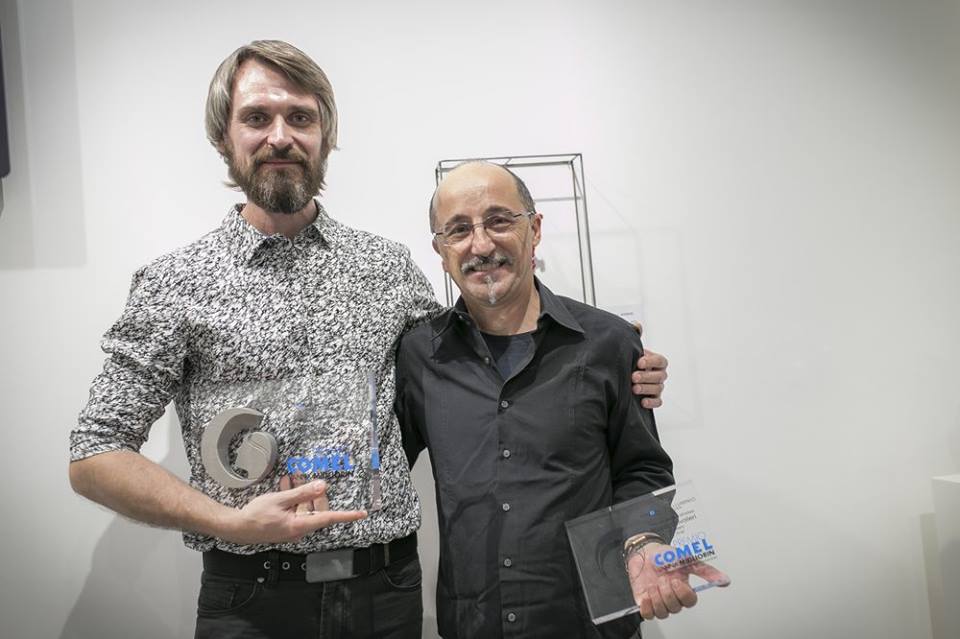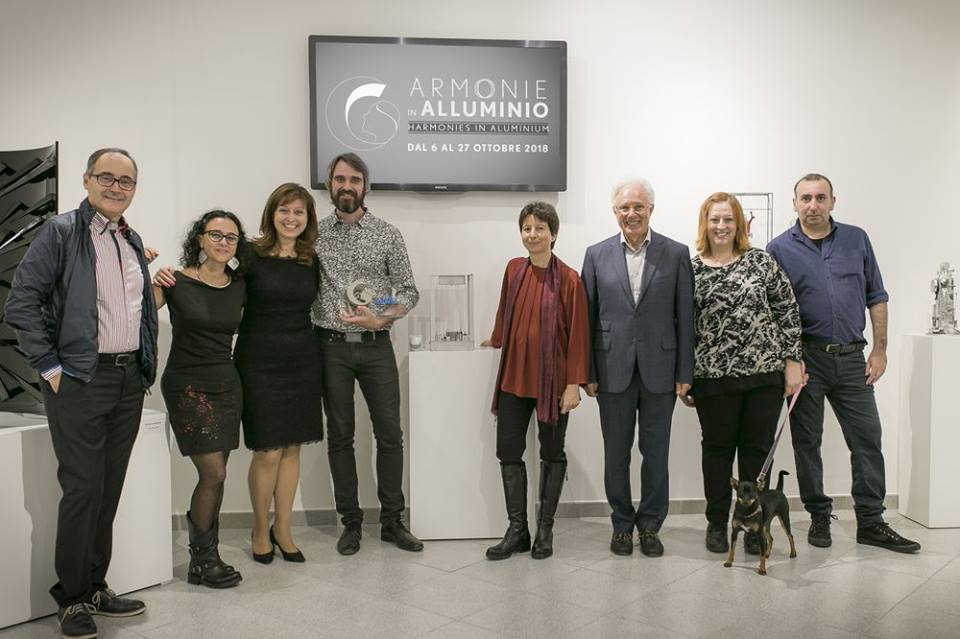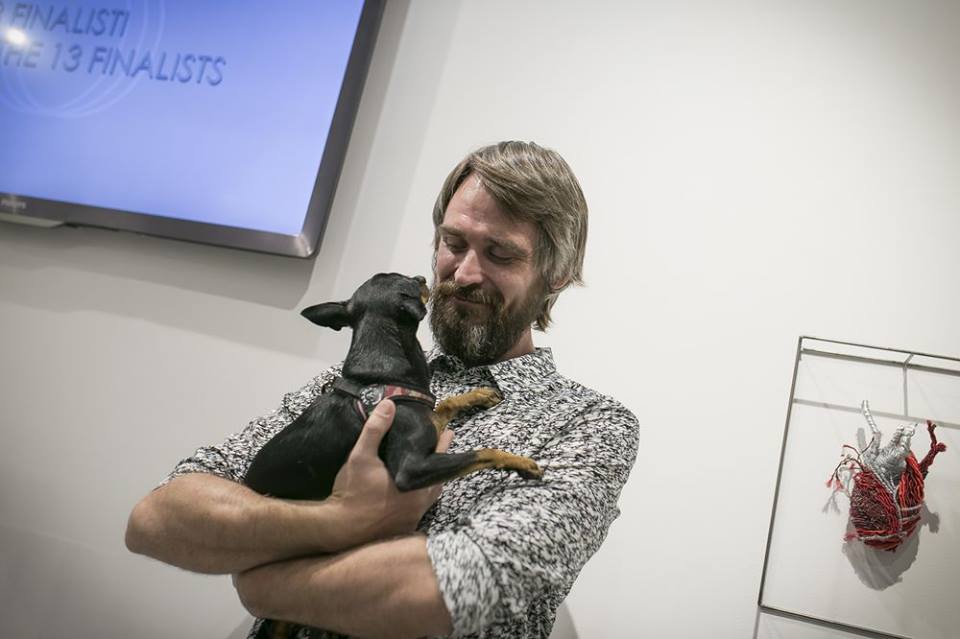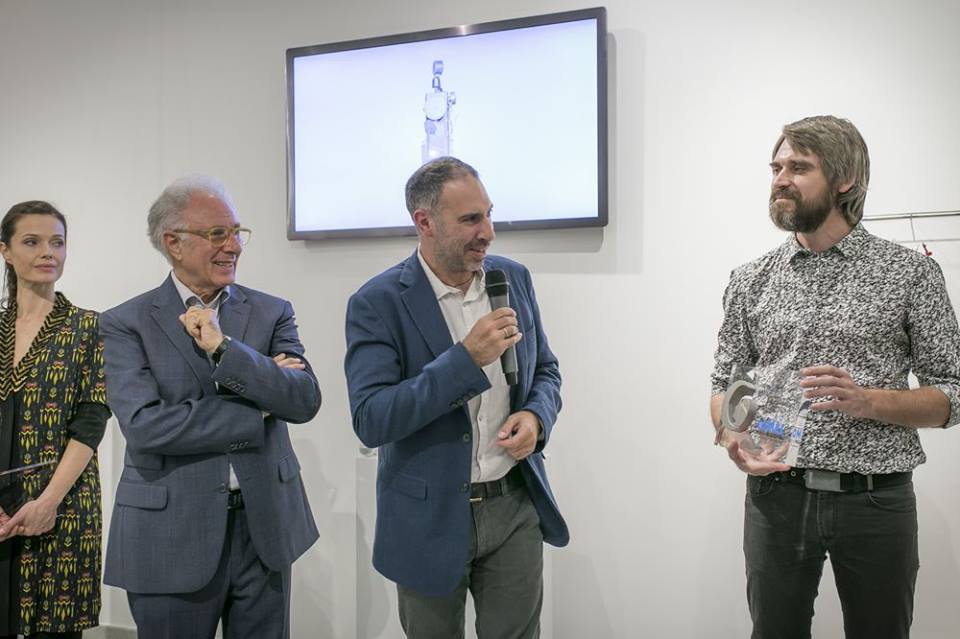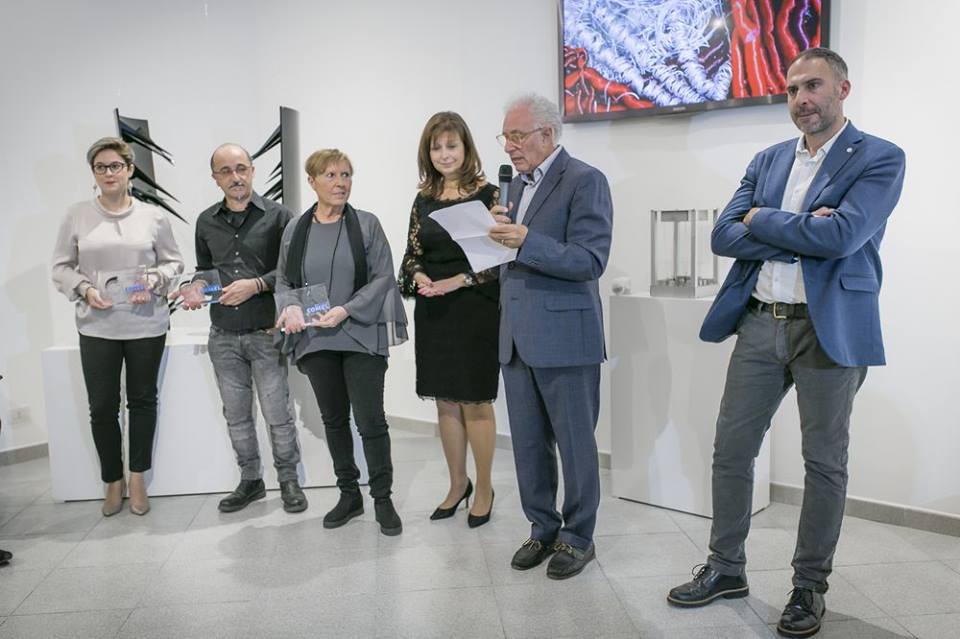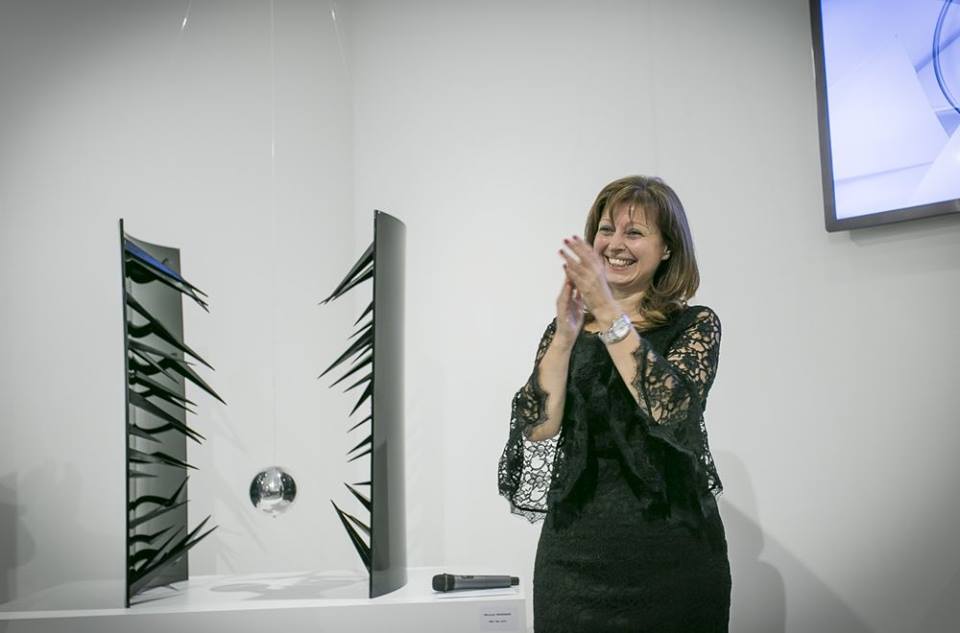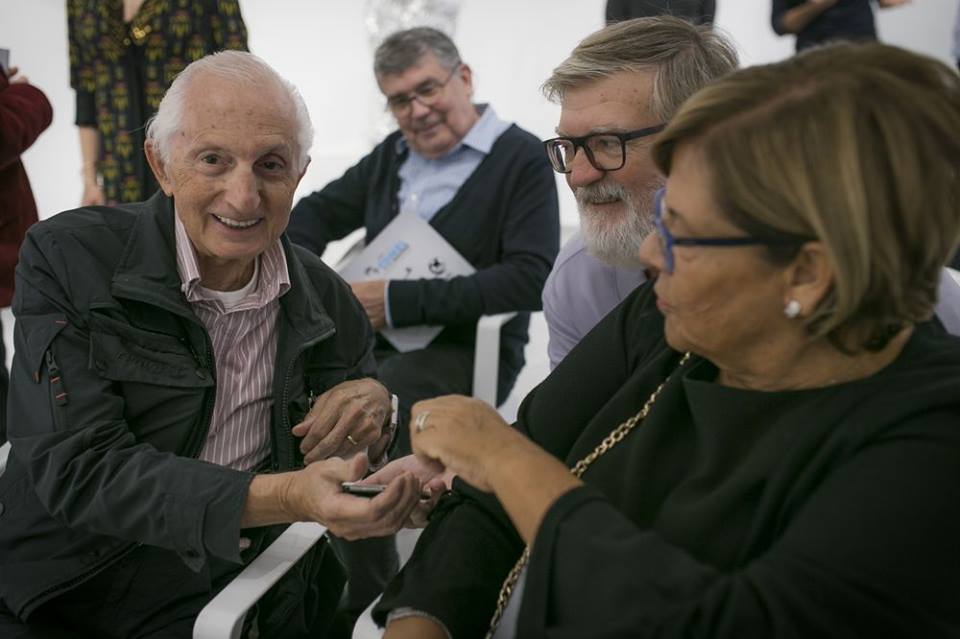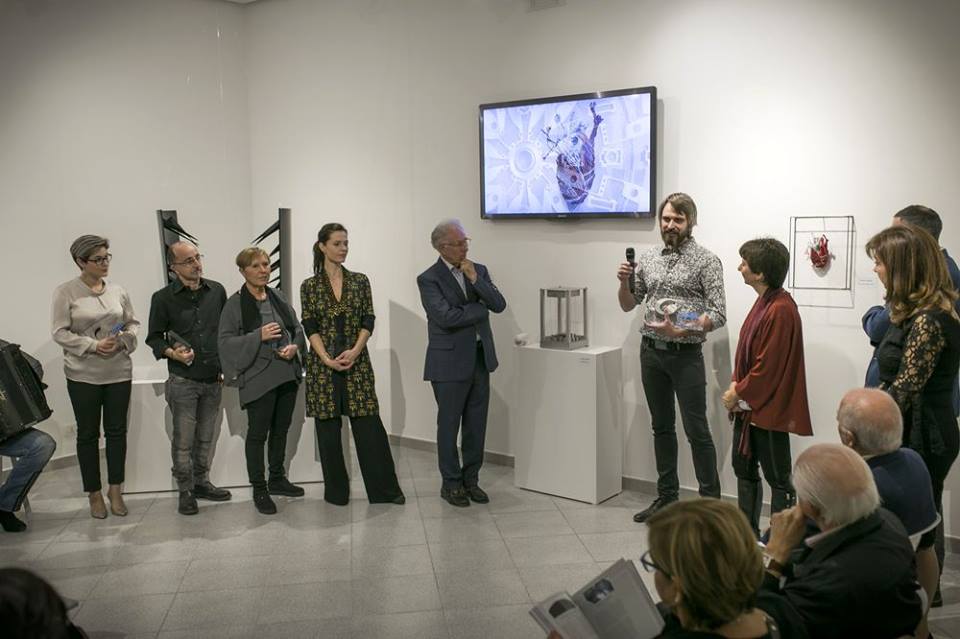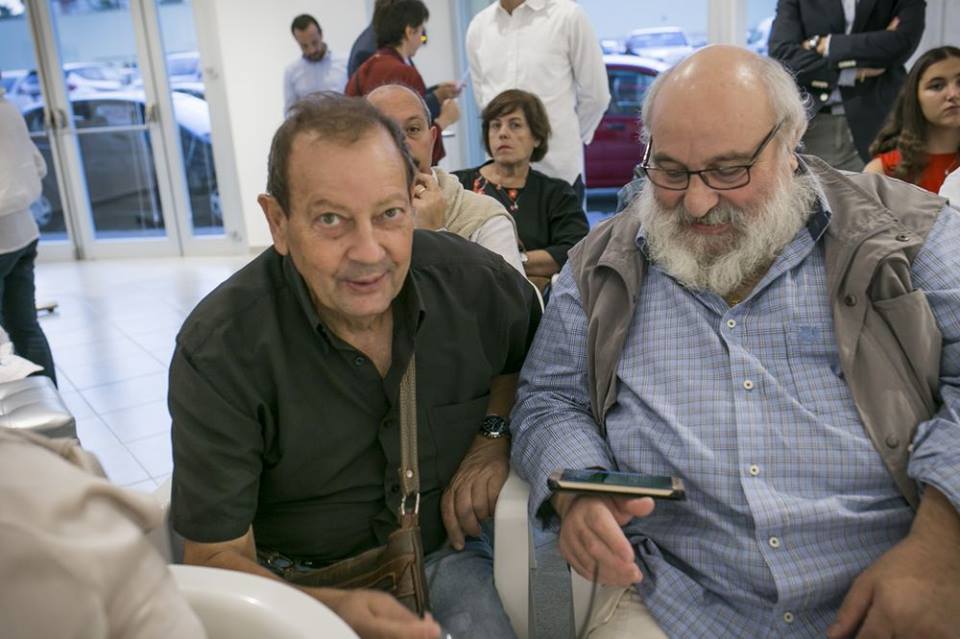THE THEME OF THIS EDITION
The word harmony (from the Greek ‘harmonia’, ἁρμονία, itself derived from ‘harmozein’) means to connect, to balance. It represents union and proportion.
The root AR- (common to art and arithmetic) announces a proportionate arrangement, an agreement; it involves a successful correlation among different elements that gives pleasure to the senses. Therefore, it presupposes an alliance, a careful disposition, a perfect joint, a bond, symbolically also a friendship, in general a balanced and pleasant combination of elements and different materials, an alloy.
‘Harmonies in aluminum’ aims at highlighting the typical qualities of the metal – particularly the high conductivity of energy, sound and heat – in order to create bonds among different materials, various expressions, and harmonized parts. Metaphorically, the underlying theme is the possible connection and harmony between the parts (things, individuals, peoples, elements, creatures and creations in general). Moreover, the artist is the one who skillfully arranges the parts in a harmonious whole, leading the materials and the different creative phases to the final harmony.
For the seventh edition, artists are asked to create works that are inspired by a sense of harmony: ideas, concepts, techniques, contents, combinations, which through aluminum become a coherent, balanced and harmonious whole.
THE JURY
GIORGIO AGNISOLA
Art critic and writer, Professor of Sacred Art at the Pontifical Theological Faculty of Southern Italy
Jury President
Giorgio Agnisola has worked extensively as a consultant for Modern and Contemporary Art in international agreements for cultural exchanges. Since 1983 he has been called in official missions by the French-speaking countries of Europe for studies and research on Contemporary Art. Furthermore, he has dealt with the relationship between Literature, Art and Psychology. Since 1990 he has collaborated with the Culture Pages of the daily newspaper ‘Avvenire’ and, more specifically, on the page ‘Arte’. He is a sociétaire member of the International Art Critics Association. He belongs to the Société Internationale of Psychopathologie de l’expression. He has promoted exhibitions of international importance, such as ‘Il Simbolismo in Belgio’ (1985), at the Royal Palace of Caserta, in collaboration with the Belgian Government; ‘Italia-Lusemburgo, Confrontations’ (2002), in collaboration with the Embassy of Luxembourg in Italy, ‘Alberto Magnelli, opera 1915-1970’, Civic Art Gallery of Gaeta. He is a consultant for the CEI for Contemporary Sacred Art. He teaches Sacred Art at the Pontifical Theological Faculty of Southern Italy, where he is co-director of the Graduate School of Art and Theology. He has written many books and he has participated, as a curator, in numerous exhibitions in Italy and abroad. As a critic and journalist, he has worked as Italy correspondent for international magazines of Photography and Art, such as ‘Aperture’ (New York), ‘HotShoe’ (London), ‘Eyemazing’ (Amsterdam), ‘Muse’ (Milan), ‘Around Photography’ (Bologna), ‘FotoCult’ (Rome). He has obtained two international awards for his work as an art critic: Chevalier de l’Ordre de Leopold II in Belgium and Officier de l’Ordre de Mérite in Luxembourg. Bruno di Marcello has dedicated a book to his work, entitled Giorgio Agnisola, dell’arte della critica, (2000).
ANDREA BAFFONI
Art critic and Art historian, essayist
Researcher of Contemporary Art and expert in Futurism. Since 2004 he has been a member of the Scientific Committee of the Gerardo Dottori Archive of Perugia. He has curated important exhibitions of contemporary art and exhibitions in Italy and abroad and he is Director of the magazine ‘Contemporart’. He has published numerous essays and articles on Futurism and on the avant-gardes of the late twentieth century, among them: Adele Galeotti Rasetti. Vita e opere di un’allieva di Giovanni Fattori (EFFE, Perugia, 2012); Contro ogni reazione. Enrico Prampolini teorico e promotore artistico (Lantana, Roma, 2015). Moreover, he is art curator at the Casa degli Artisti of Fossombrone (PU), a cultural association and idyllic creative retreat within the natural reserve of Gola del Furlo in the Marche region, Italy.
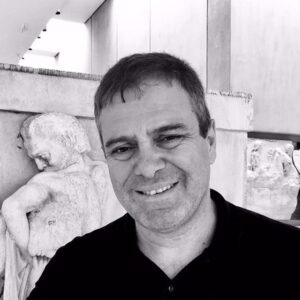
Art historian and Art critic
PhD in Art History at the University of Rome ‘La Sapienza’, he is Associate Professor of History of Contemporary Art at the Department of Humanities, Social Education of the University of Molise. He deals with modern and contemporary art, with particular attention to the art of the sixteenth century, the art of the second half of the twentieth century and the art of the latest Italian and international generations. He has curated exhibitions in Italian and international museums and public spaces. He is the founder and director of ARATRO – Archives of Electronic Arts – Laboratory for Contemporary Art, University of Molise, Campobasso. He is a member of the scientific council and board of the Giorgio e Isa de Chirico Foundation.
ADA PATRIZIA FIORILLO
Art critic and Art historian, essayist
Associate Professor of History of Contemporary Art and Phenomenology of Contemporary Art at the University of Ferrara. Historian and art critic, she is a media contributor, registered in the Association of journalists, since 1990. She directs the Annals of Letters of the University, for which she is also responsible for the ‘Art’ section. Among her publications L’occhio delle Avanguardie. De Chirico e il mito degli Argonauti, Il Lavoro Editoriale, Ancona 2012; Hiroyuki Masuyama. Cava de’ Tirreni 1792-2012, Pièce Unique, Parigi 2013; La Scultura dopo il Duemila. Idolatria ed iconoclastia, Gutemberg, Fisciano (SA), 2015; Dalle neoavanguardie agli esiti del postmoderno, Mimesis, Milano 2017; Il corpo della forma. Aspetti della scultura del XX secolo, Liguori, Napoli.
MARIA GABRIELLA MAZZOLA
Manager of the aluminum sector
She runs the CO.ME.L. company along with her brother Adriano and her sister Luisa. She combines the technical-business preparation with the organization and coordination roles, bringing to the company new guidelines, such as the attention to communication, innovation and marketing. She has always supported, personally and with the company, activities aimed at promoting the area: art exhibitions, publications, visual arts festivals, short film festivals and animal protection. In December 2012, she has been awarded for entrepreneurial merits by the ‘Associazione Culturale Nuova Immagine Latina’. She is the President of the ‘Associazione Culturale VANNA MIGLIORIN’ which promotes and spreads contemporary intellectual and artistic works, in all their forms and expressions. Among the various activities of the association, there is the promotion of the COMEL Award and the organization of monographic exhibitions dedicated to internationally renowned artists.
THE 13 FINALISTS
THE WINNERS
MINUTES OF THE JURY OF THE
COMEL AWARD VANNA MIGLIORIN 2018
On October 7, 2018, at 10 am, the selection board of the seventh edition of the International Contemporary Art Award COMEL Vanna Migliorin met, at the Spazio COMEL gallery in Latina (ITALY). The jurors were: Andrea Baffoni, Ada Patrizia Fiorillo, Maria Gabriella Mazzola, Giorgio Agnisola, president. Lorenzo Canova was absent, unable to intervene.
After the greetings of Maria Gabriella Mazzola, Giorgio Agnisola opens the works recalling the theme of this edition, “Harmonies in Aluminium”, and inviting the members of the jury to perform a detailed survey of the works individually, identifying possibly a set of three names on which to put the attention in view of the awarding of the prize. Previously, the award organization had sent to the jury a video of the 13 finalist works already placed in the gallery.
We then move to a friendly debate, during which the jurors explain and motivate their preferences. Afterwards, we go back to reviewing the works, this time collegially, after contacting via phone Lorenzo Canova, making him aware of the state of the work, as well as acquiring his opinion.
Then we arrive at the final discussion and, after a calm exchange of ideas, the committee decides to assign the COMEL Award 2018 to:
Sergey Filatov, Russian artist, with the following motivation:
“In the workPlatasonus, Sergey Filatov, referring to the experiments between avant-garde music and visual arts, uses aluminum as sound metal with essential construction and original and minimal technology, thanks to the percussive action of wires moved by simple electrical devices, bearing small clappers at the end. The contrast between the functional essentiality of the structure and the evocative randomness of the musical effects is resolved in a sense of delicate, discreet and intimate harmony, which is not free from a subtle and perhaps disquieting allusion to the possible hybridizations between man and machine“
The Jury emphasizes the good level and variety of stylistic registers and technological paths of the finalist works, and decides to award a special mention to four works:
“Labyrinth I “ (2017), di Federica Zianni, con la seguente motivazione:
“A hollow shape and emphasized by a wraparound formal motif, in which the reference to an organic nature and, in particular, to the internal structure of an auricle, is a reason to bring us back to the theme of listening and silence.“
“My time“, (2018), by Marco Cavalieri, for the following motivation:
“Marco Cavalieri‘s work My Time, where the original assembly of objects and plates is engraved in aluminum to configure an imaginary rotating device, packaged in the manner of totems. It refers to the idea of internal mechanisms of life, between memory and time. “
“Piattaforma AL-13“, (2018), by Laura De Lorenzo, for the following motivation:
“In its structure, characterized by an elegant compositional essentiality and a fitting set of visual synthesis, constructive and planar dynamics coexist with pictorial effects entrusted to the ductile and sensitive qualities of the metal.”
“My Open heart“, (2018), by Monika Kosior, for the following motivation:
“In My Open heart, the Polish artist Monika Kosior plays with refinement between the “open heart” of the artist’s psychological and spiritual intimacy and the almost surgical unveiling of the anatomy of an organ that has always been hanging in the balance between its physical functions and its millenarian metaphorical and symbolic connotation. “
The Prize of the audicence goes to Carmelo Minardi for the work “Musa Spaziale”.
The great charm of this artwork has impressed the audience for its evocative capacity of images of other places and future times. A work initially strikes for its aesthetic beauty and then slowly reveals the incredible technical skill thanks to which it was made.
Carmelo Minardi is a skilled aluminum sculptor, able to master a technique such as oxyfuel, usually used with other metals. By this technique the metal is cut with an instrument that uses a jet of pure oxygen. Because of its characteristics and chemical conformation, in addition to cutting, the aluminum is deformed obtaining this particular ‘crumpled’ effect, that is not used in industry, but which acquires a unique charm in art and that Carmelo Minardi has been able to make vivid and vibrant .
PHOTO GALLERY
The setting of the exibition
Vernissage, october 8th, 2018
Award Cerimony of the Winner, october 20th, 2018
with the participation of Maestro Marco Lo Russo, accordionist and composer

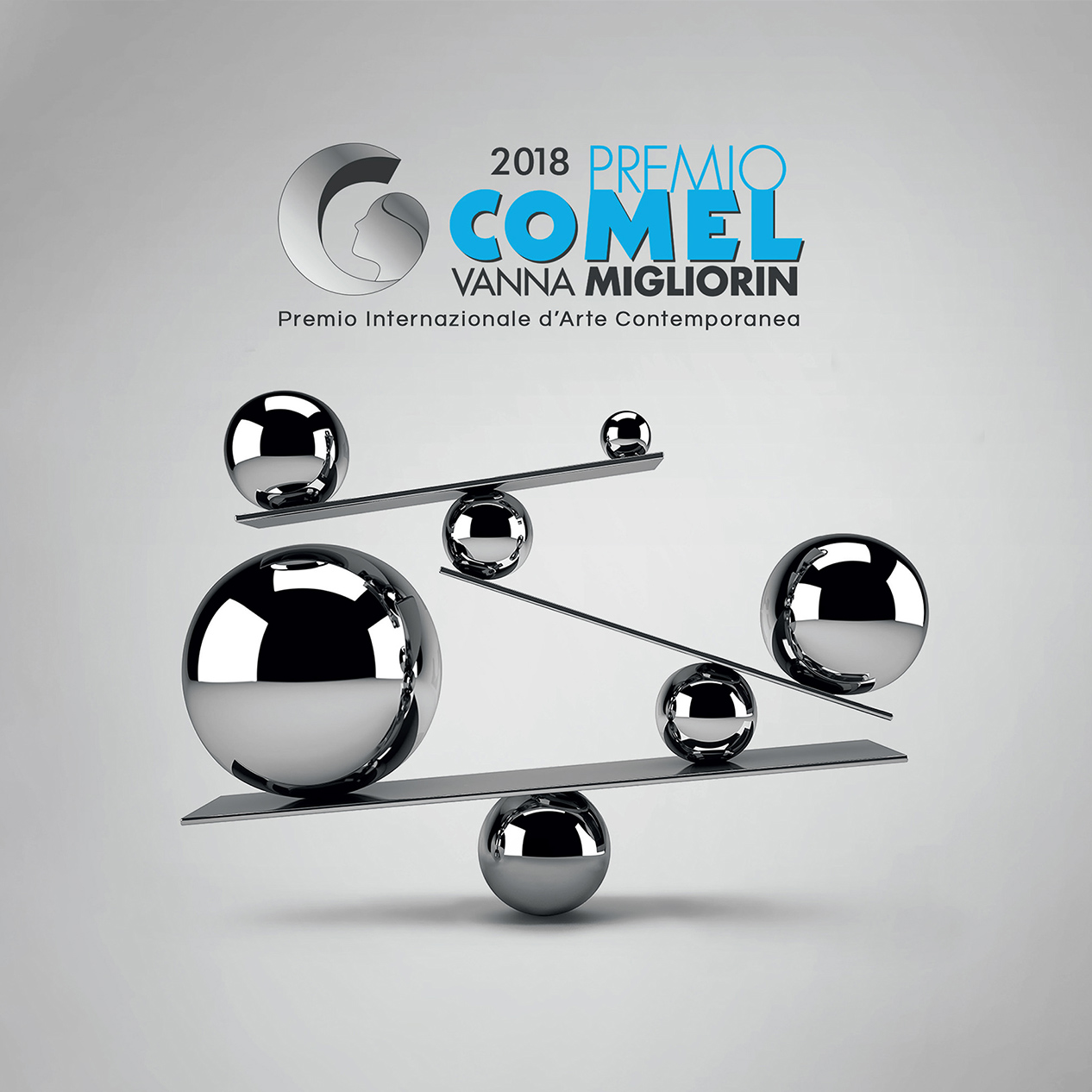
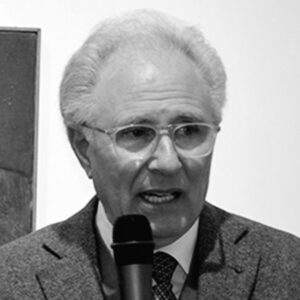
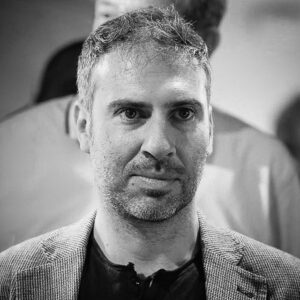
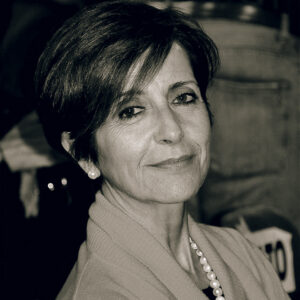

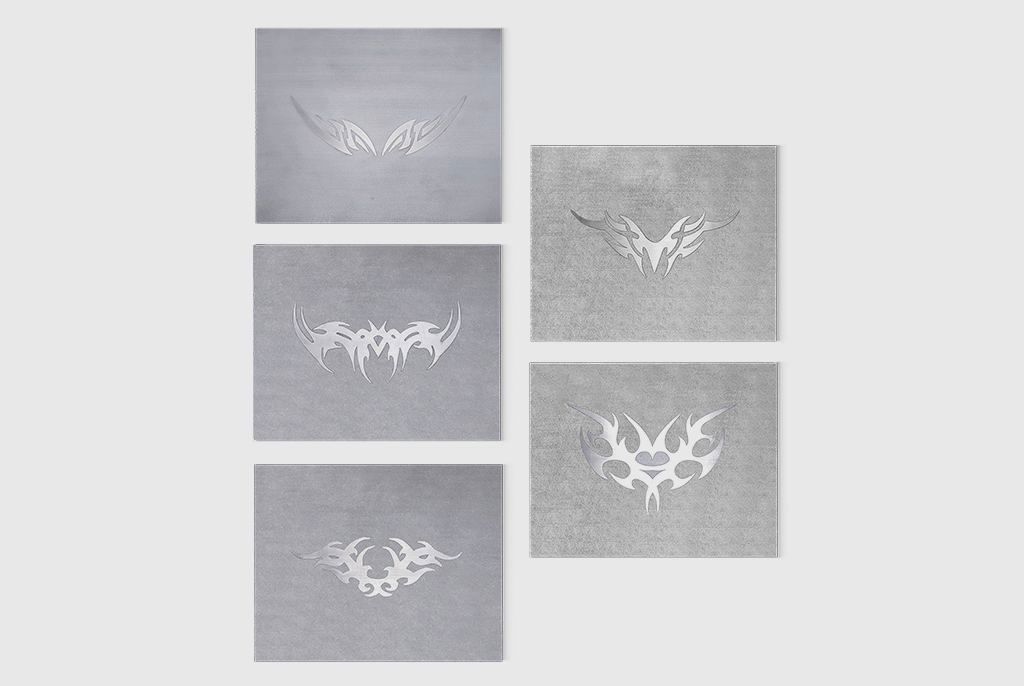
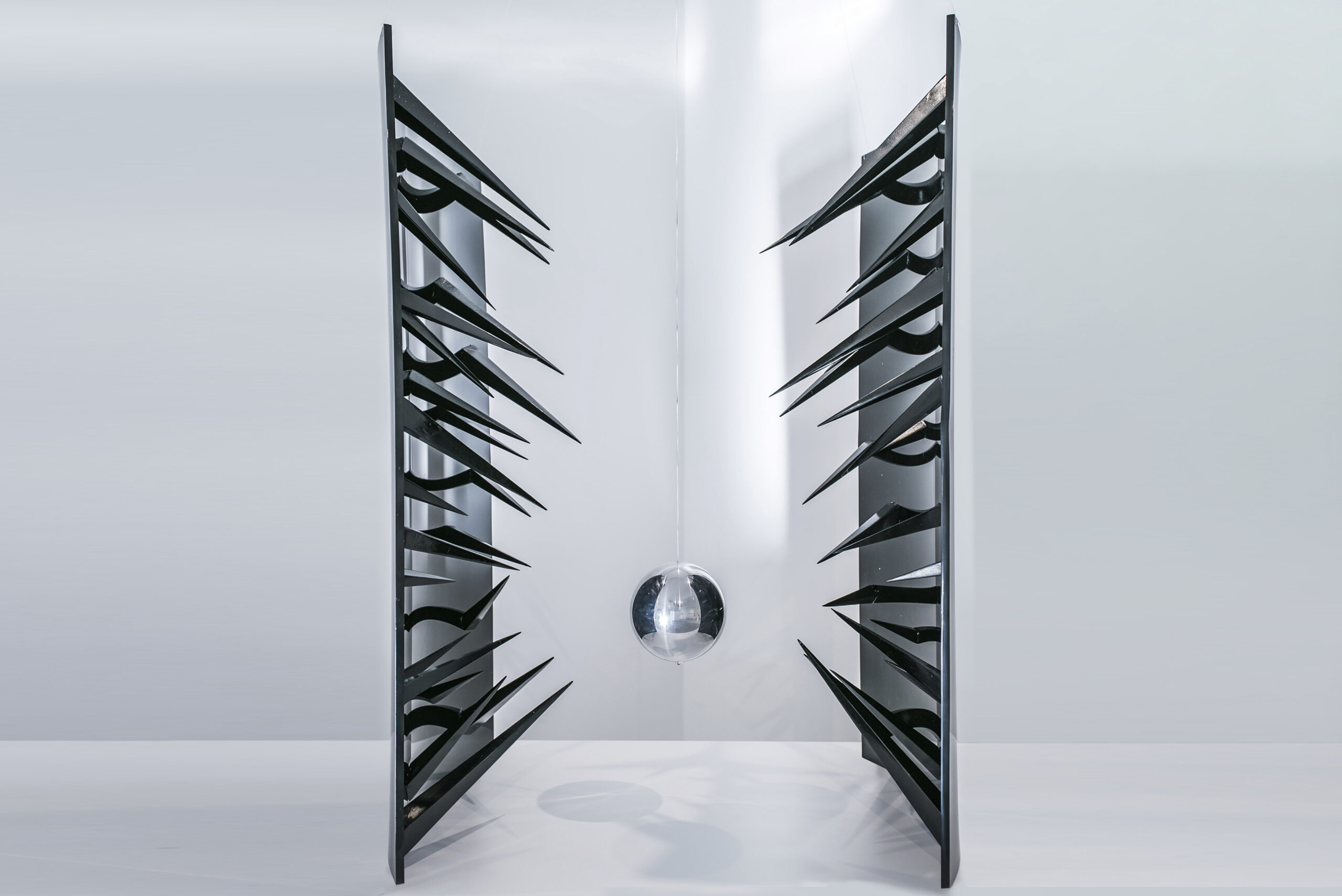
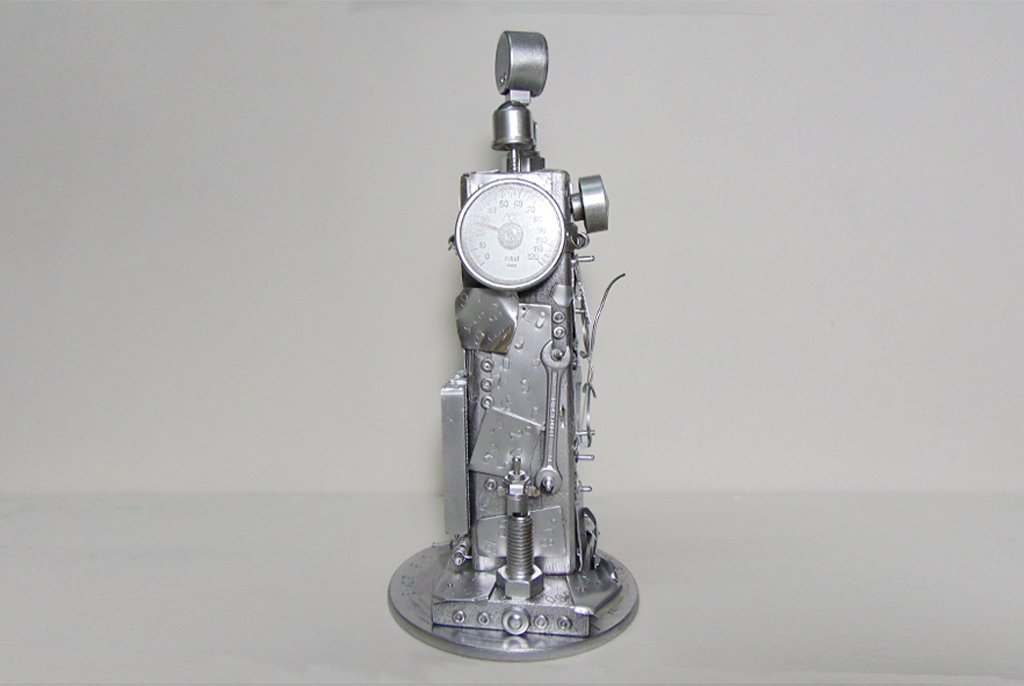
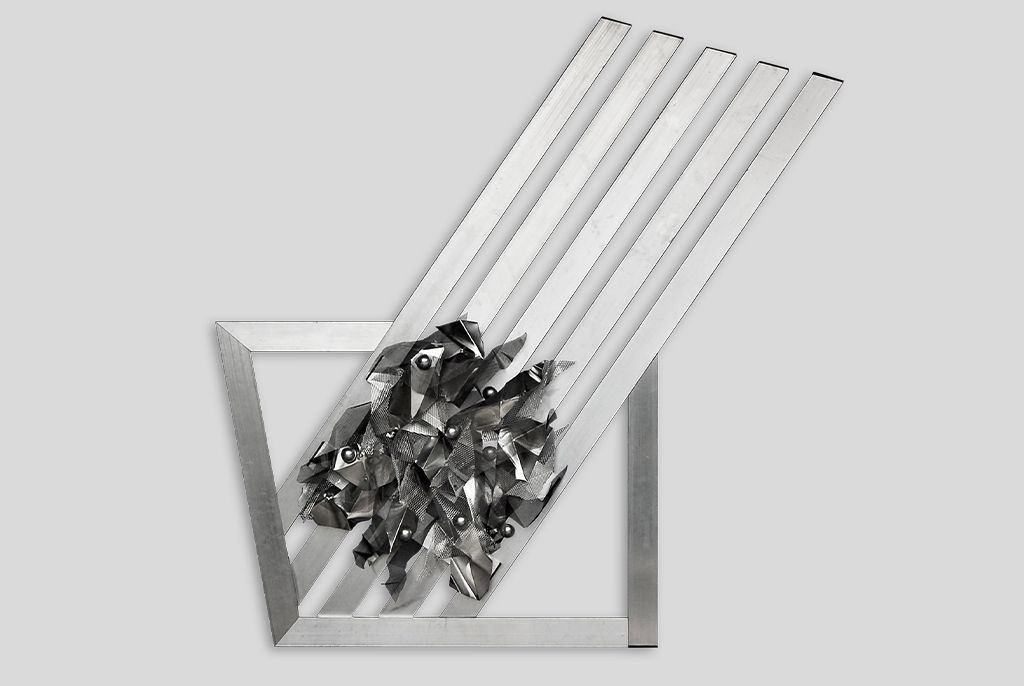
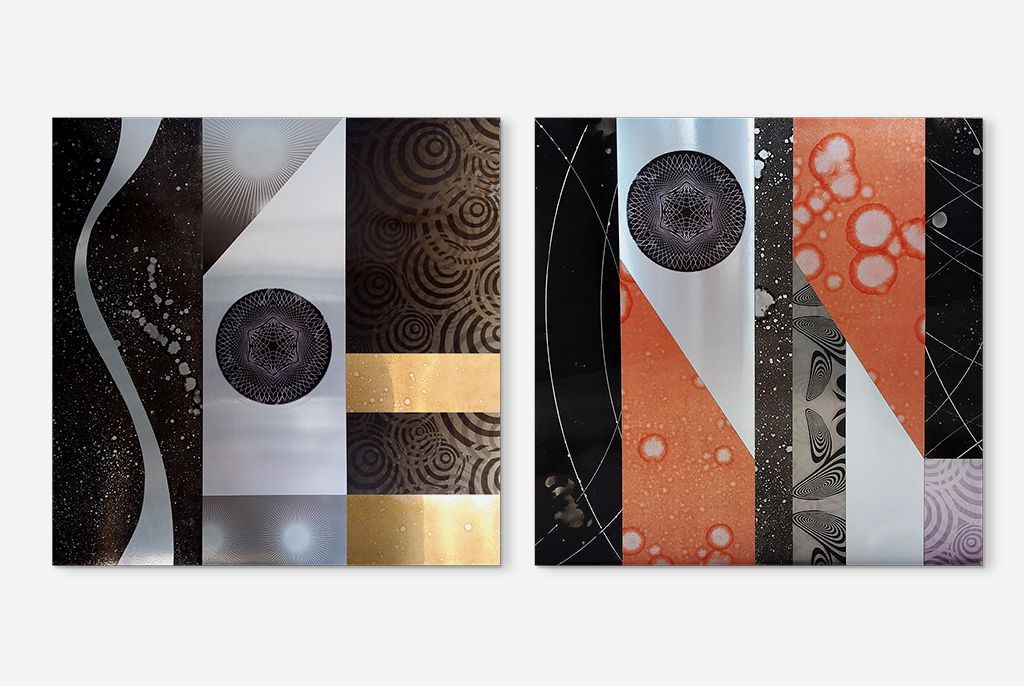
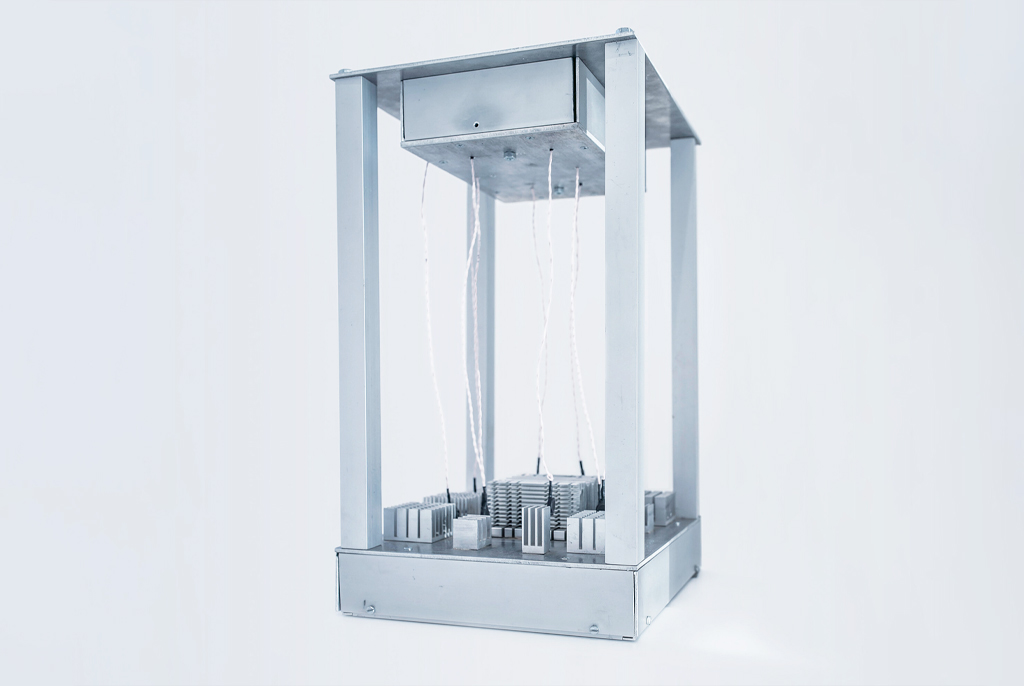
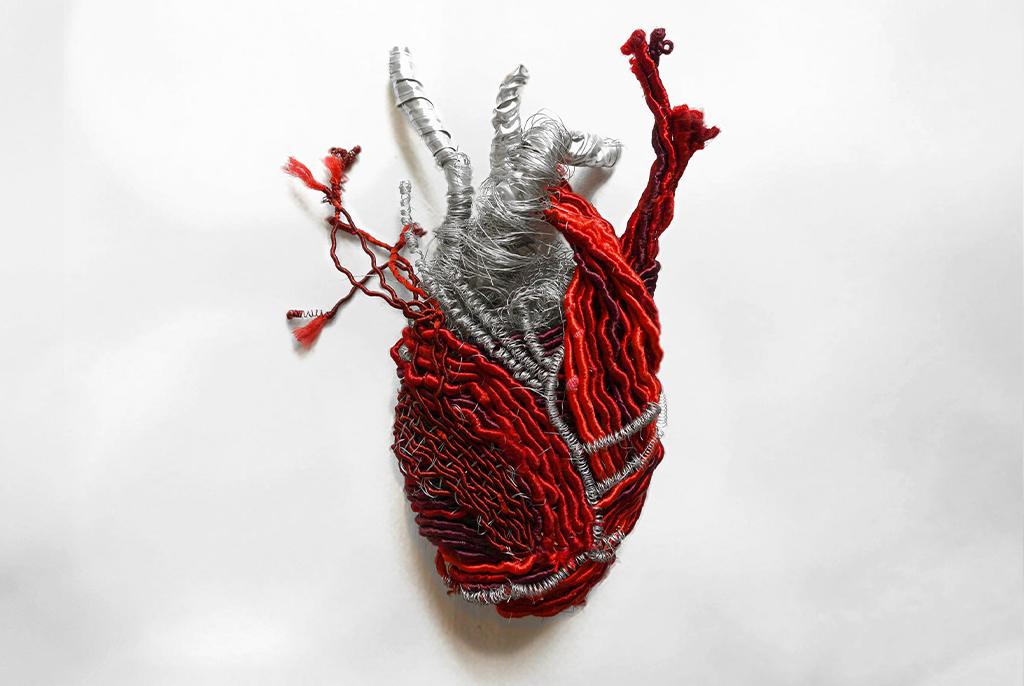
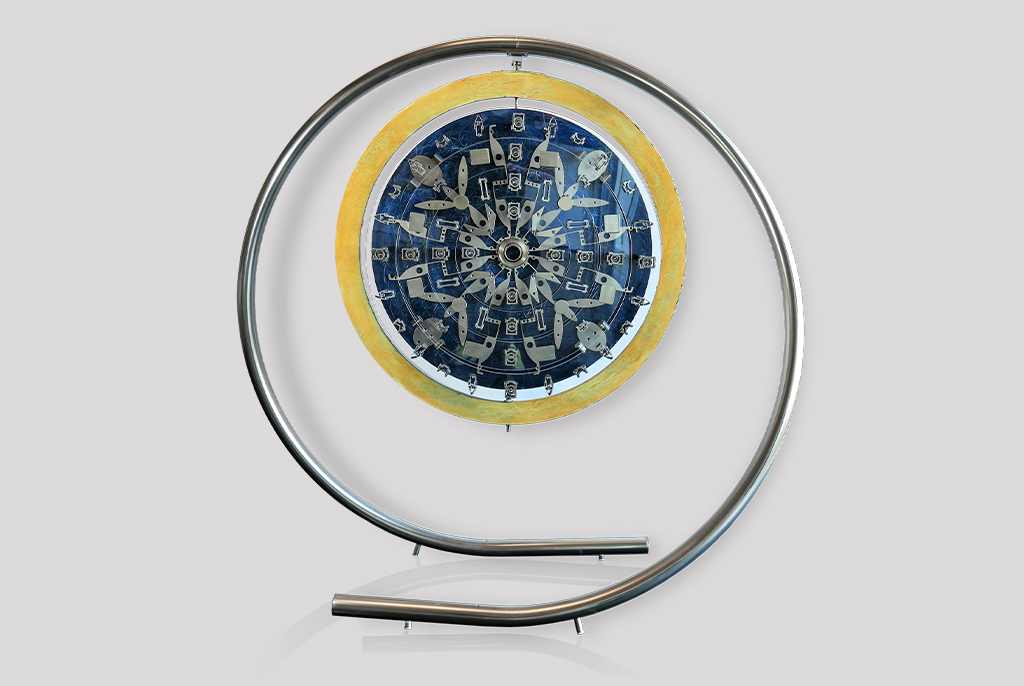
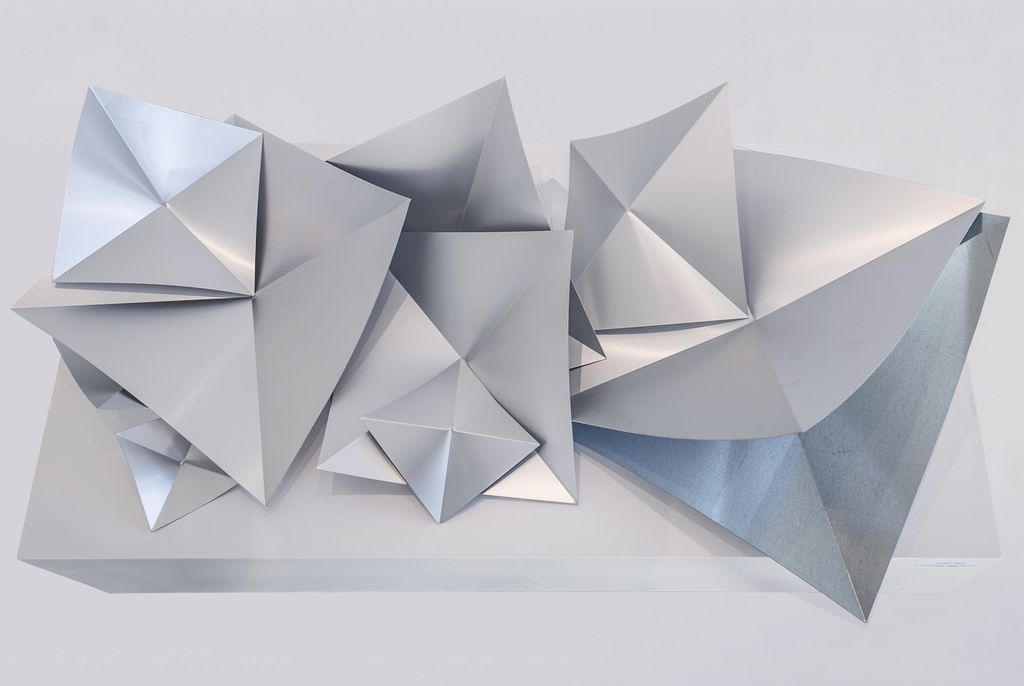
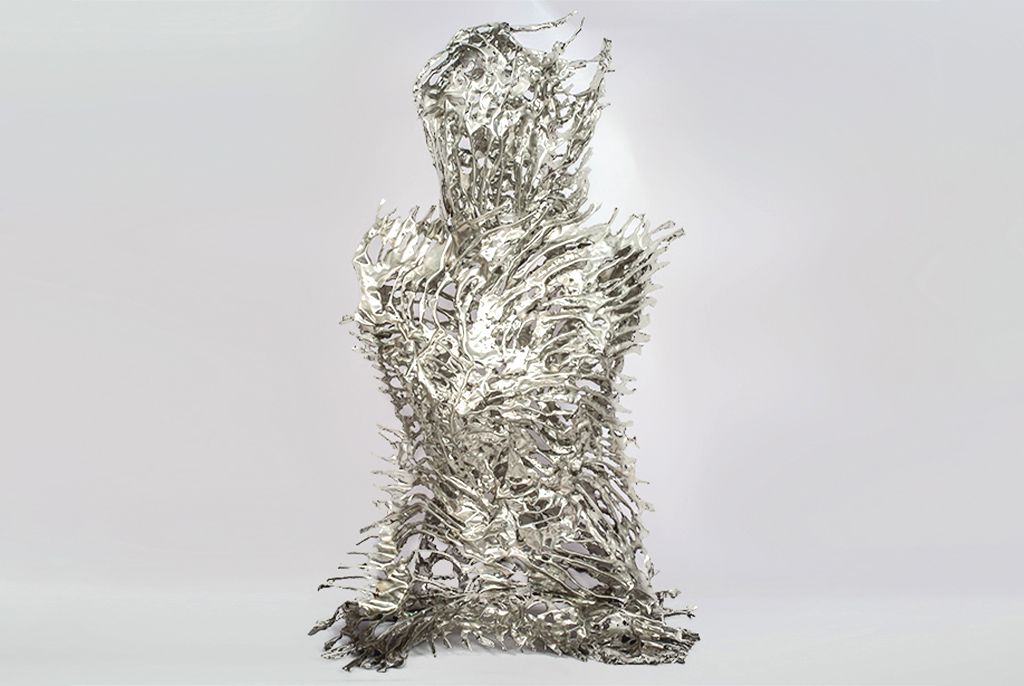
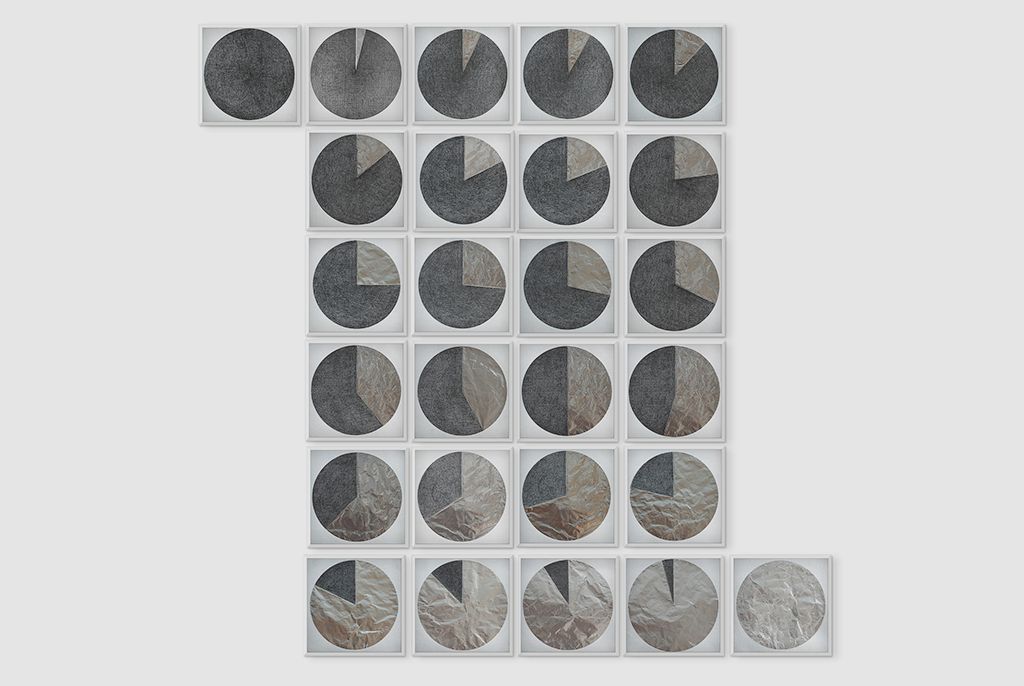
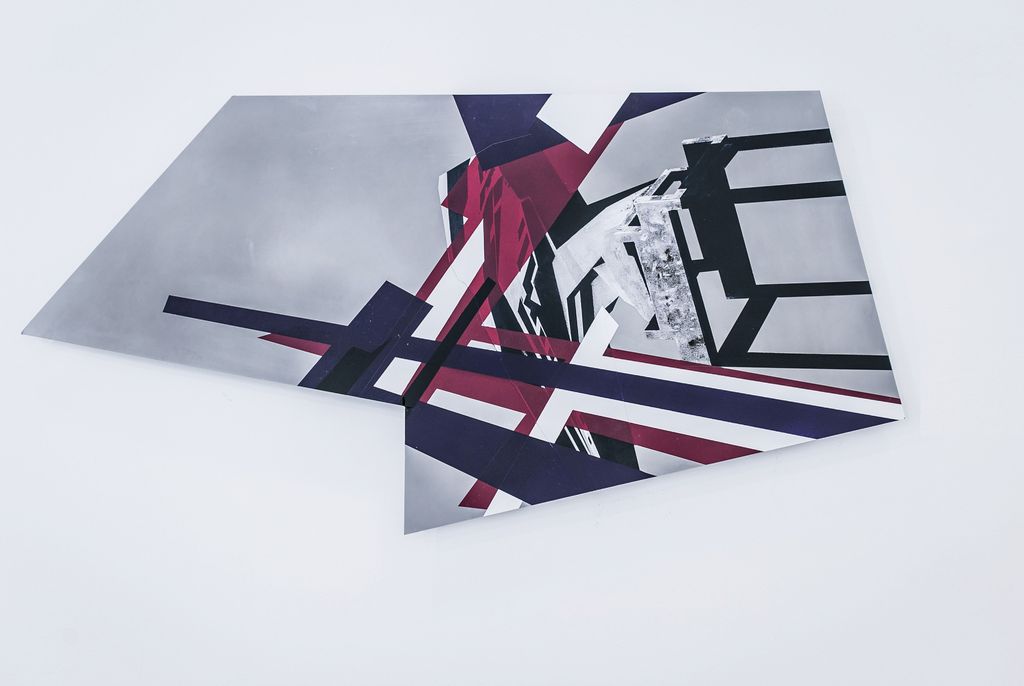
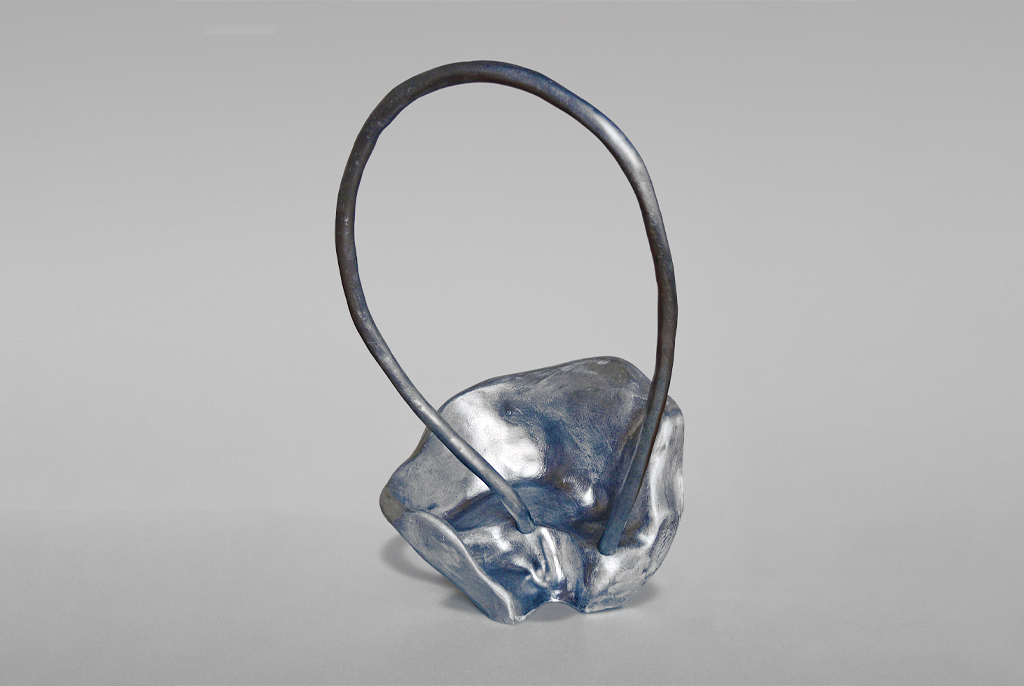
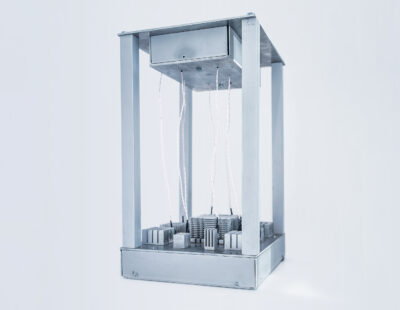 “In the workPlatasonus, Sergey Filatov, referring to the experiments between avant-garde music and visual arts, uses aluminum as sound metal with essential construction and original and minimal technology, thanks to the percussive action of wires moved by simple electrical devices, bearing small clappers at the end. The contrast between the functional essentiality of the structure and the evocative randomness of the musical effects is resolved in a sense of delicate, discreet and intimate harmony, which is not free from a subtle and perhaps disquieting allusion to the possible hybridizations between man and machine“
“In the workPlatasonus, Sergey Filatov, referring to the experiments between avant-garde music and visual arts, uses aluminum as sound metal with essential construction and original and minimal technology, thanks to the percussive action of wires moved by simple electrical devices, bearing small clappers at the end. The contrast between the functional essentiality of the structure and the evocative randomness of the musical effects is resolved in a sense of delicate, discreet and intimate harmony, which is not free from a subtle and perhaps disquieting allusion to the possible hybridizations between man and machine“